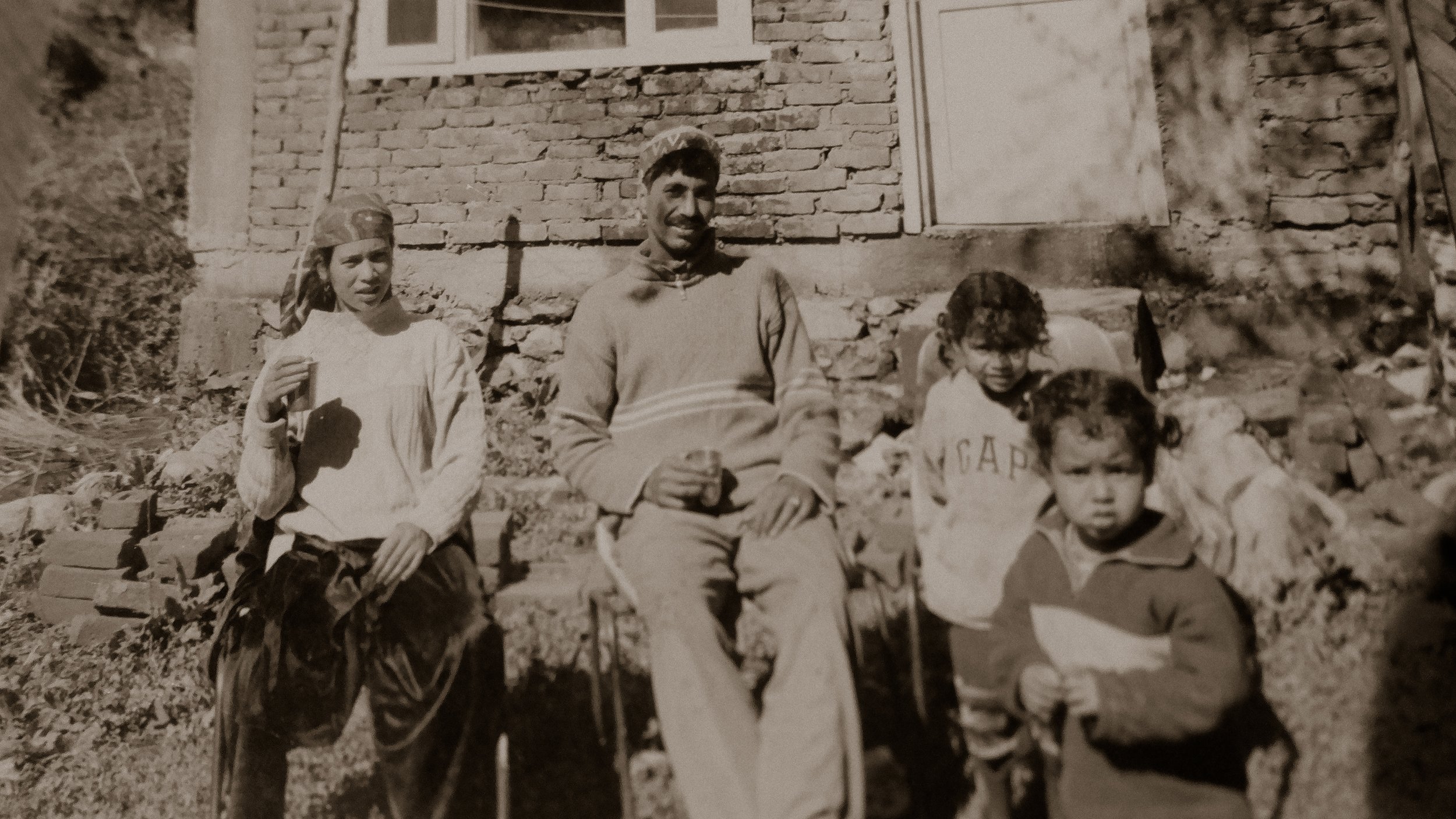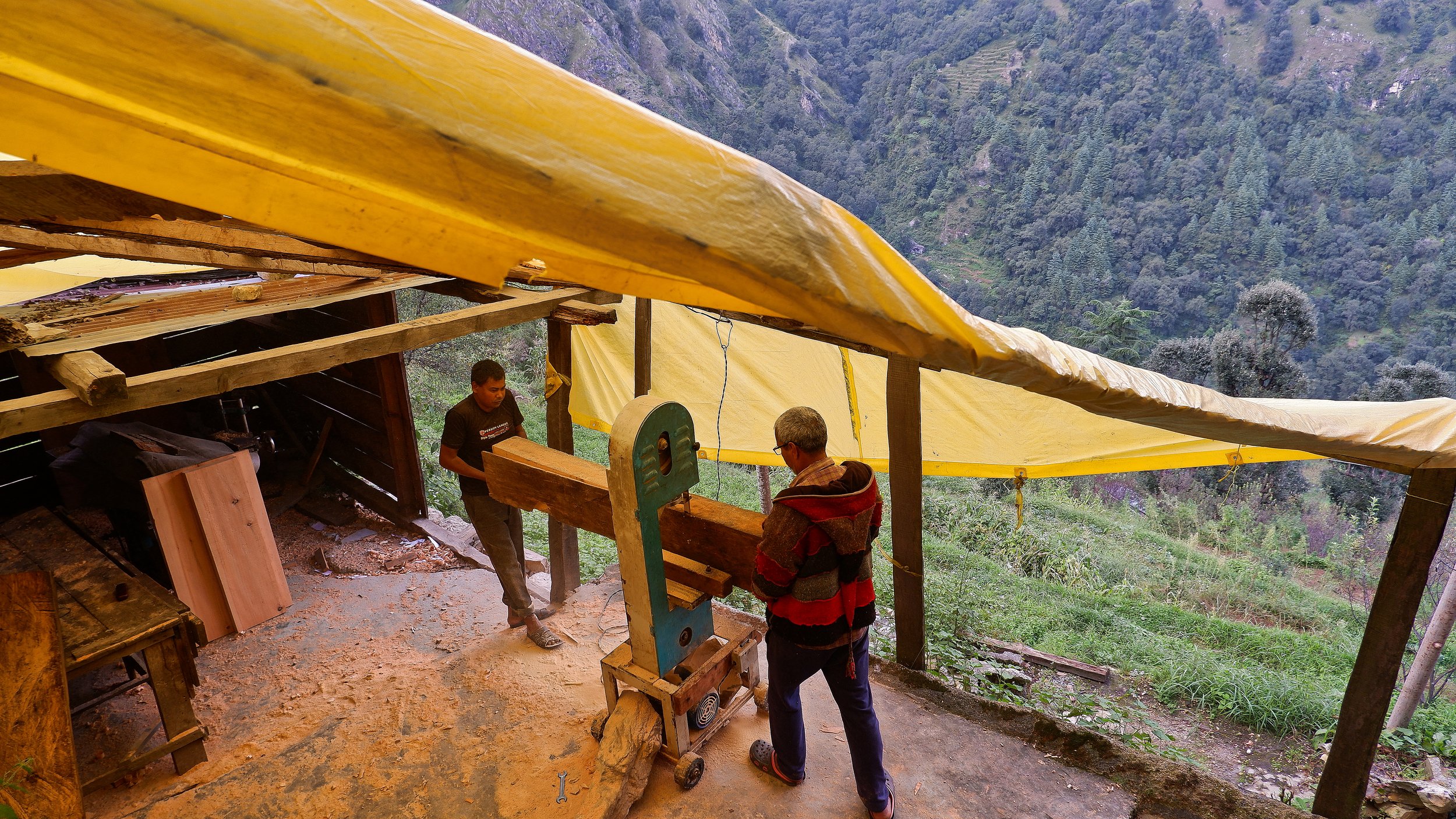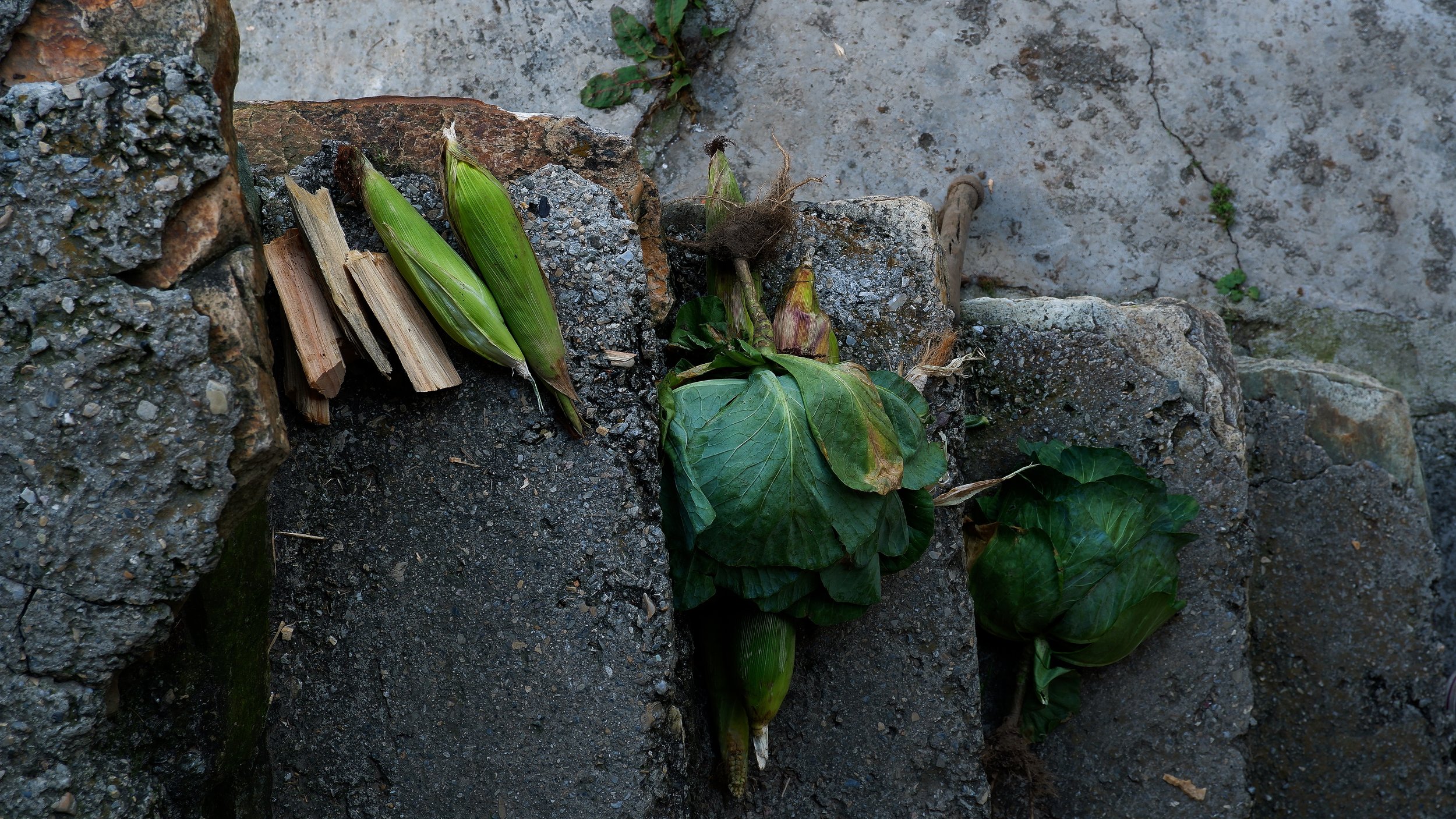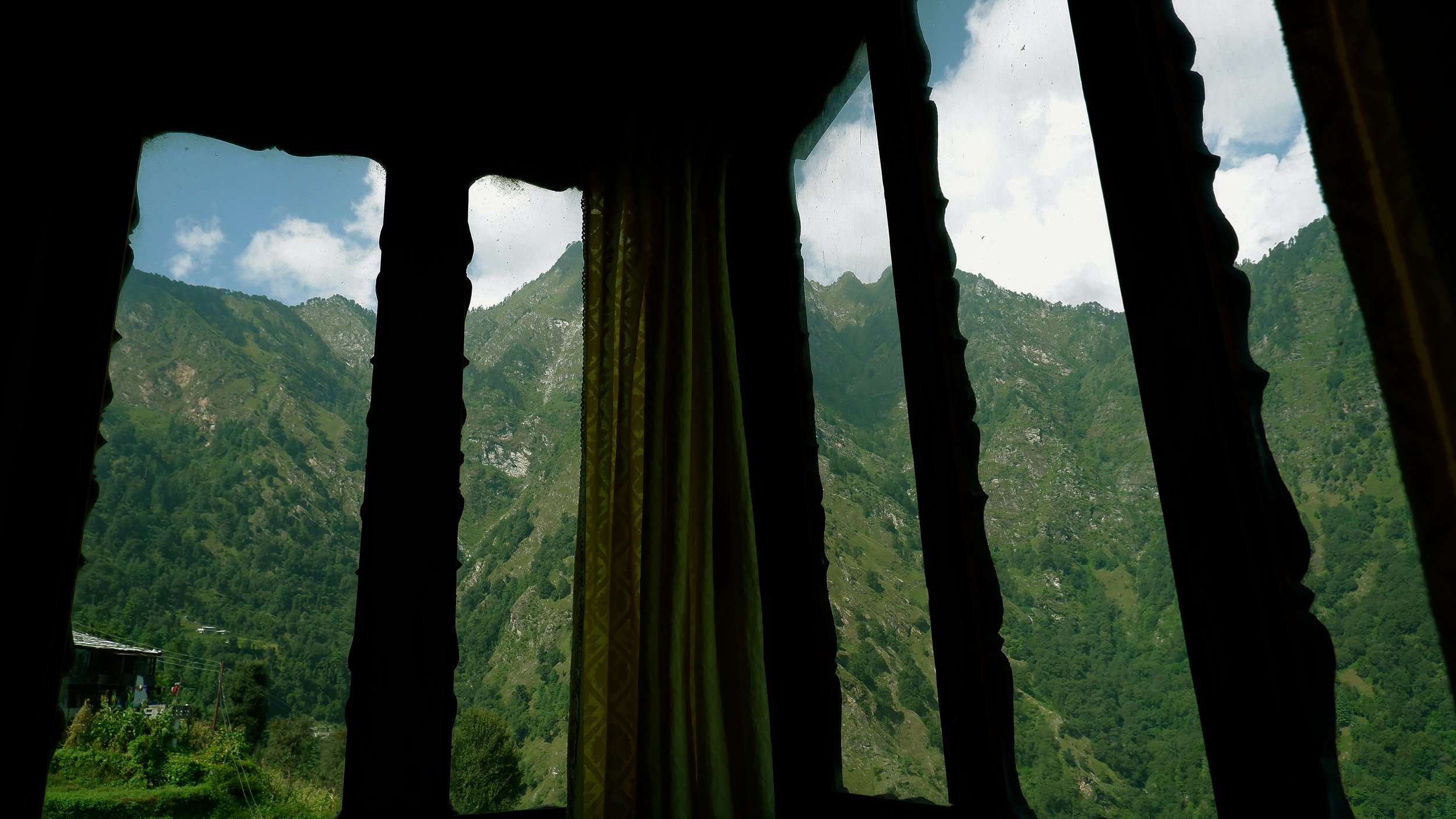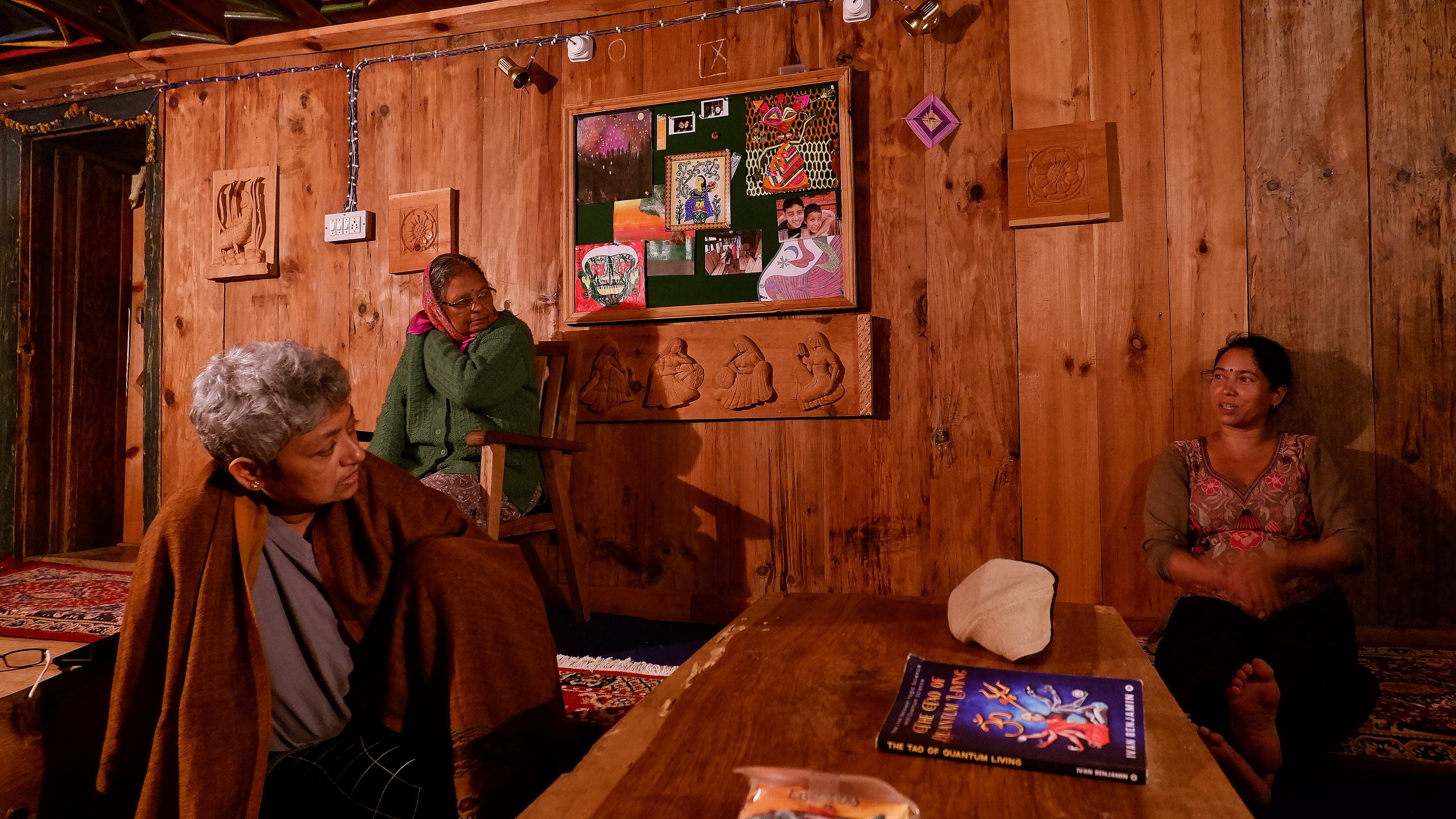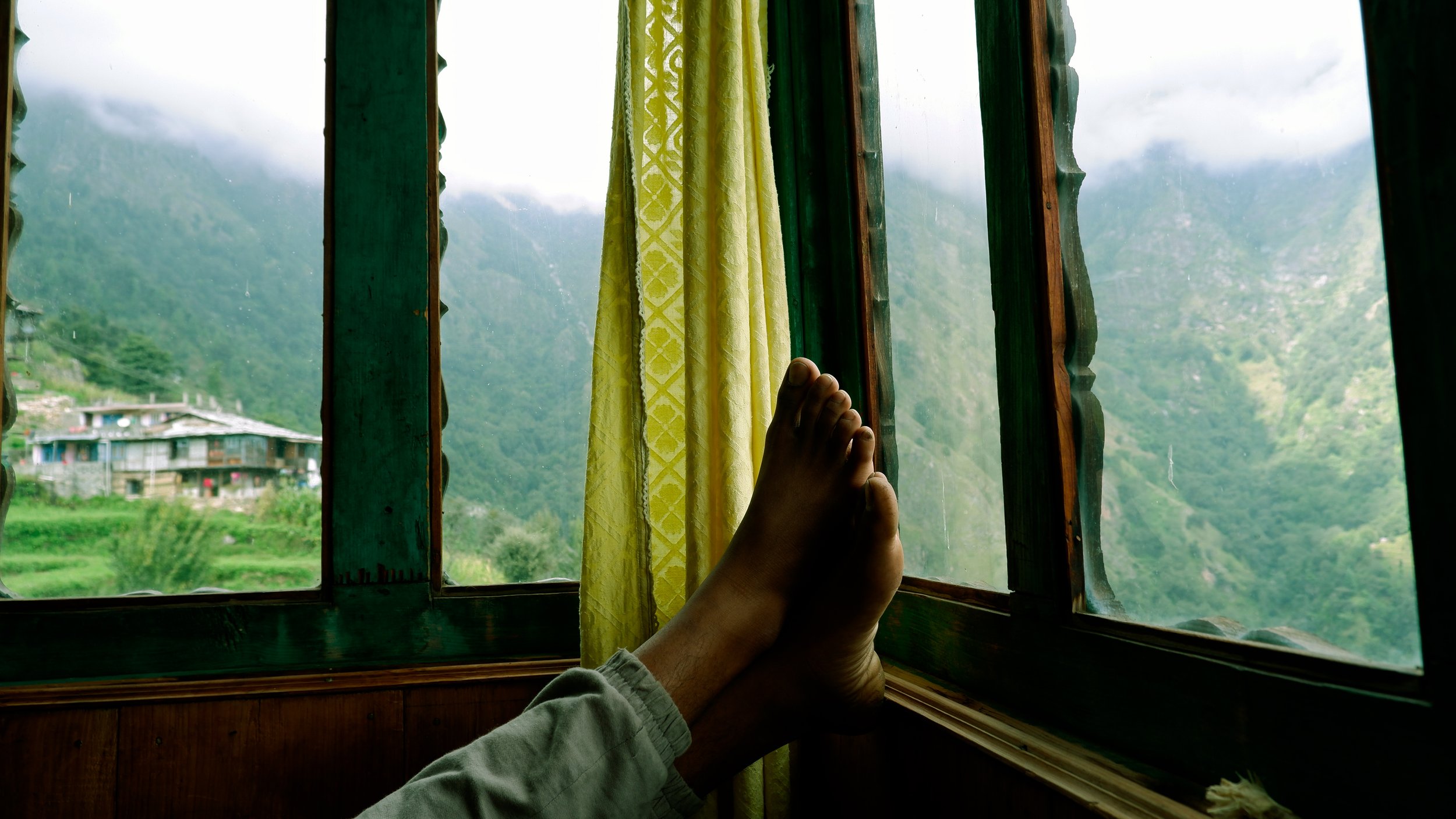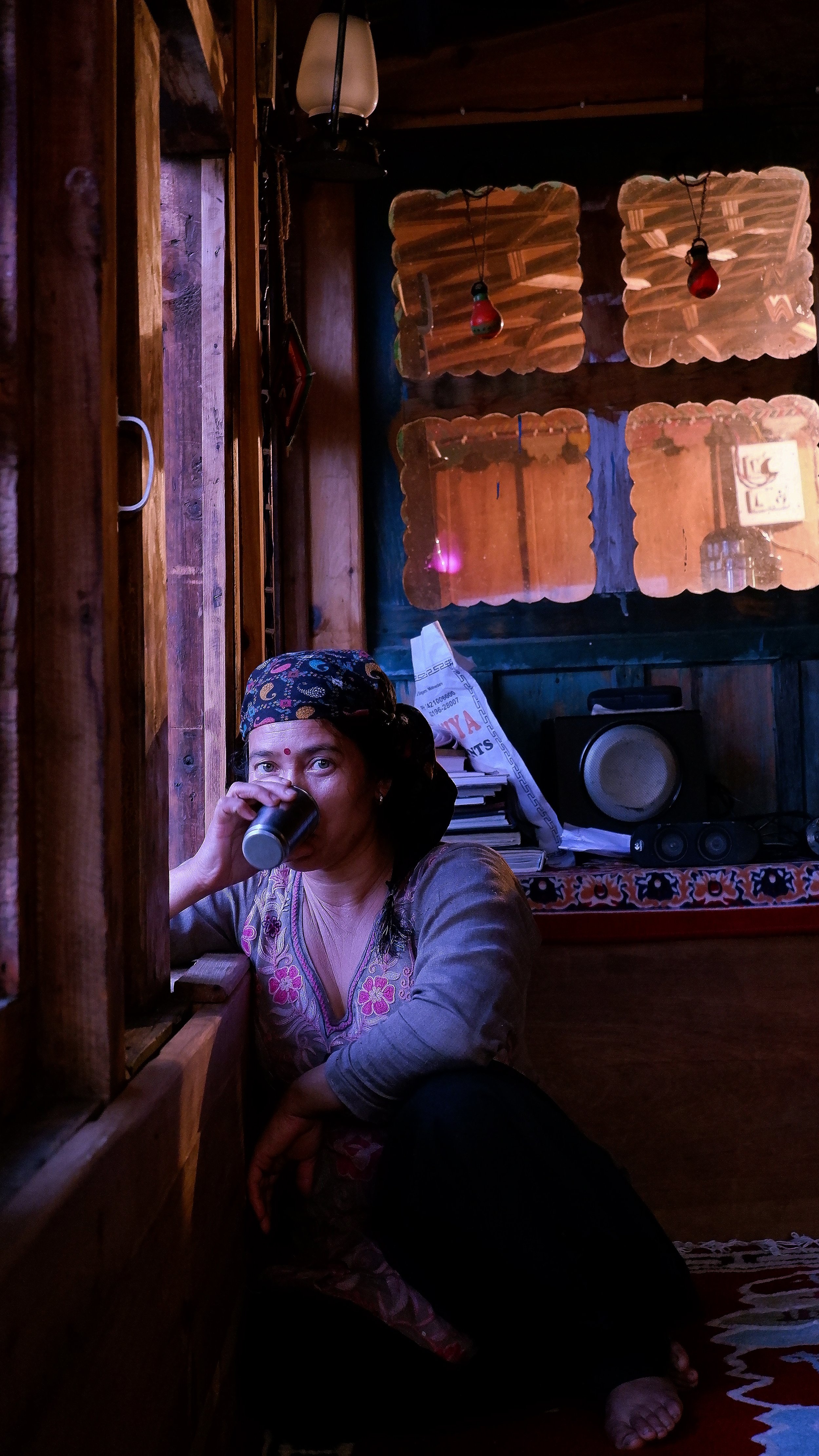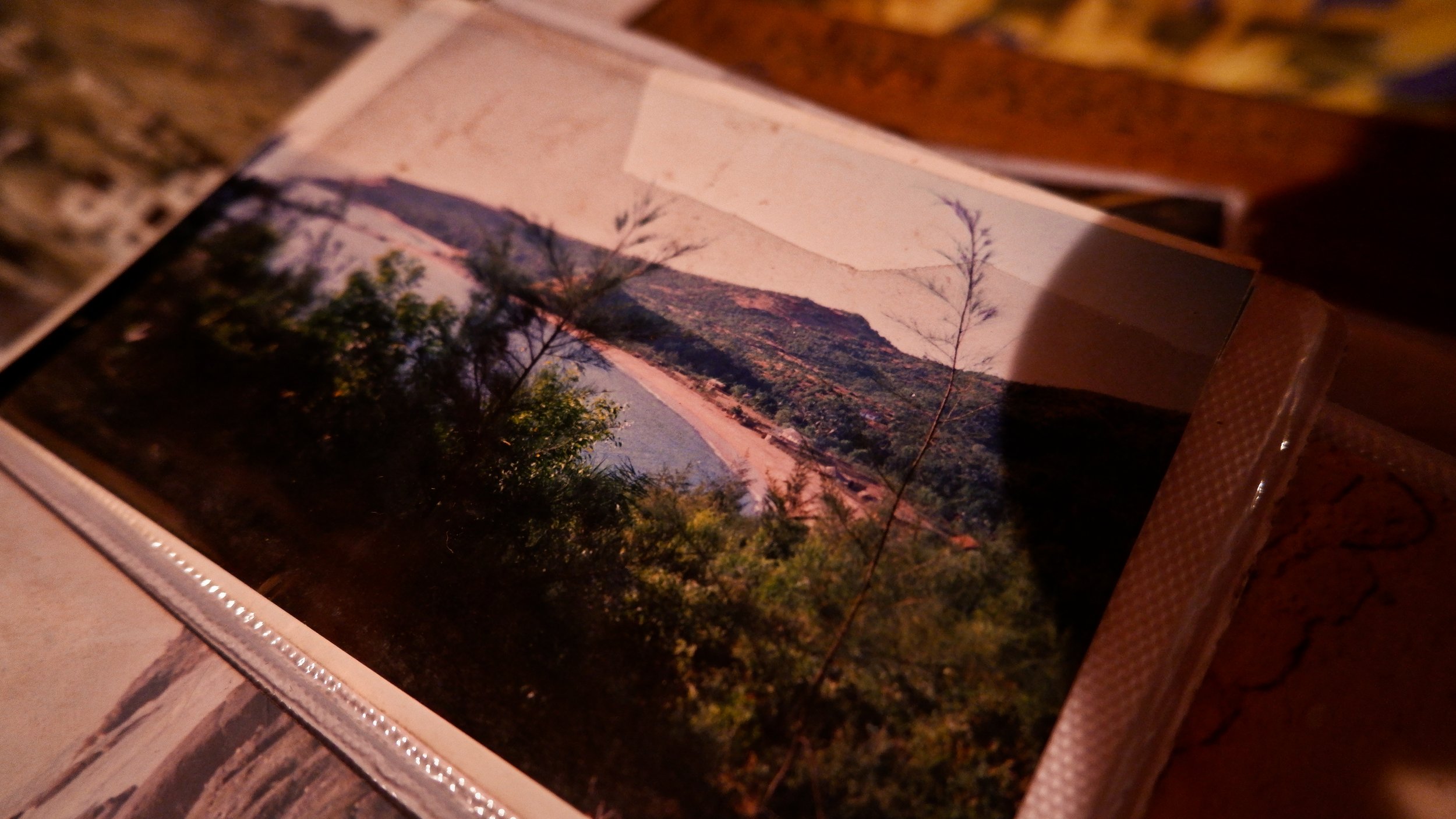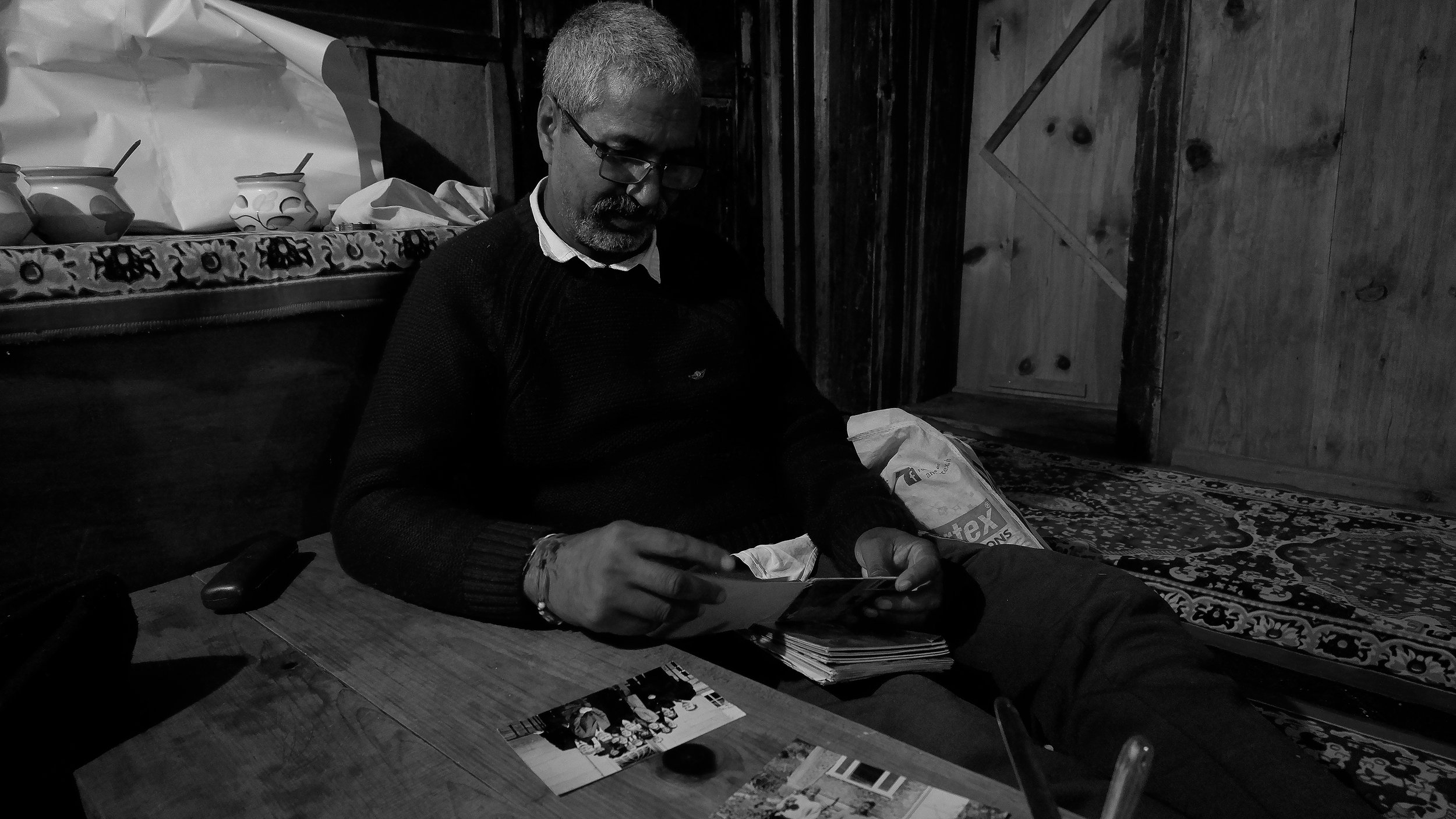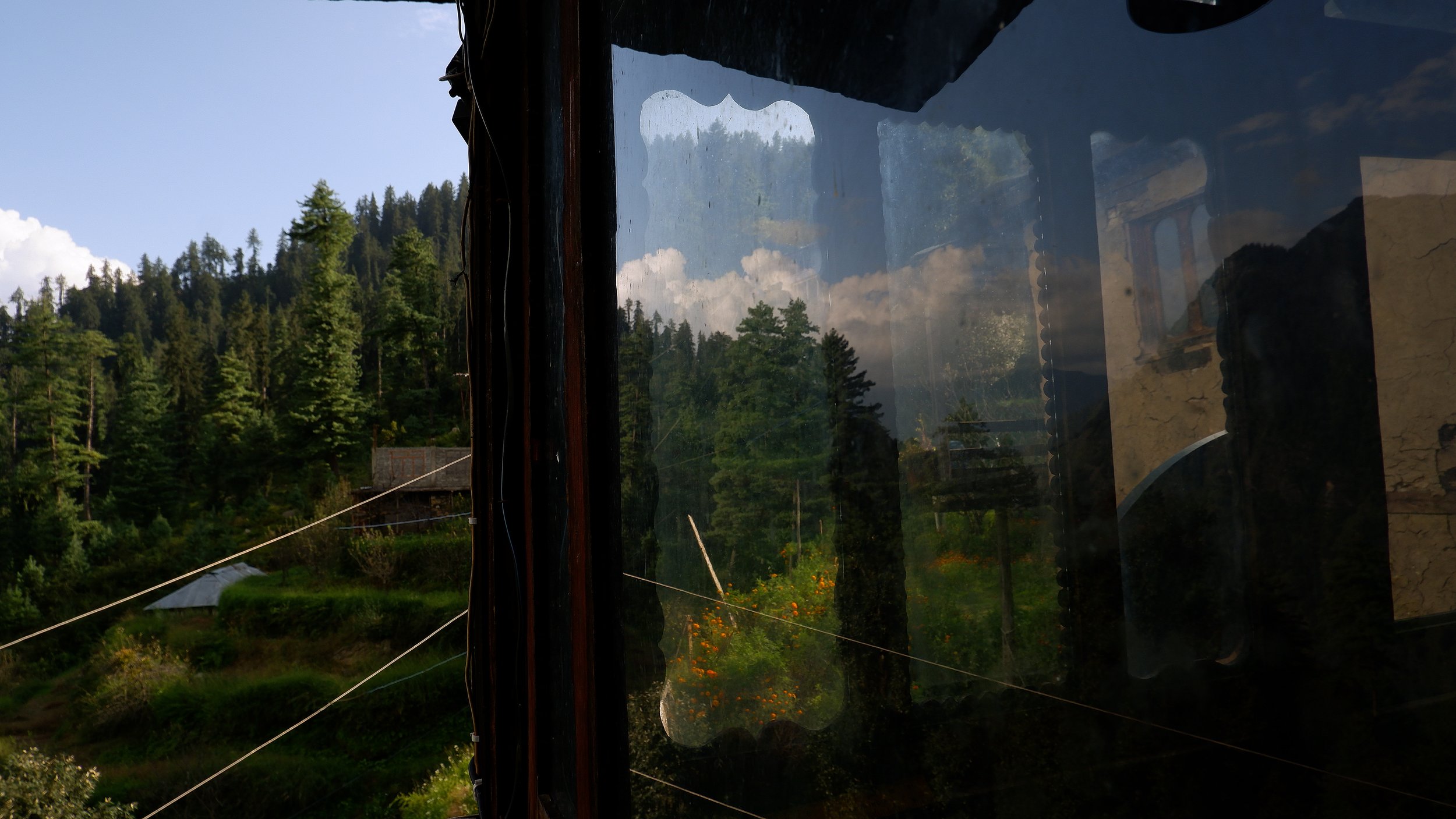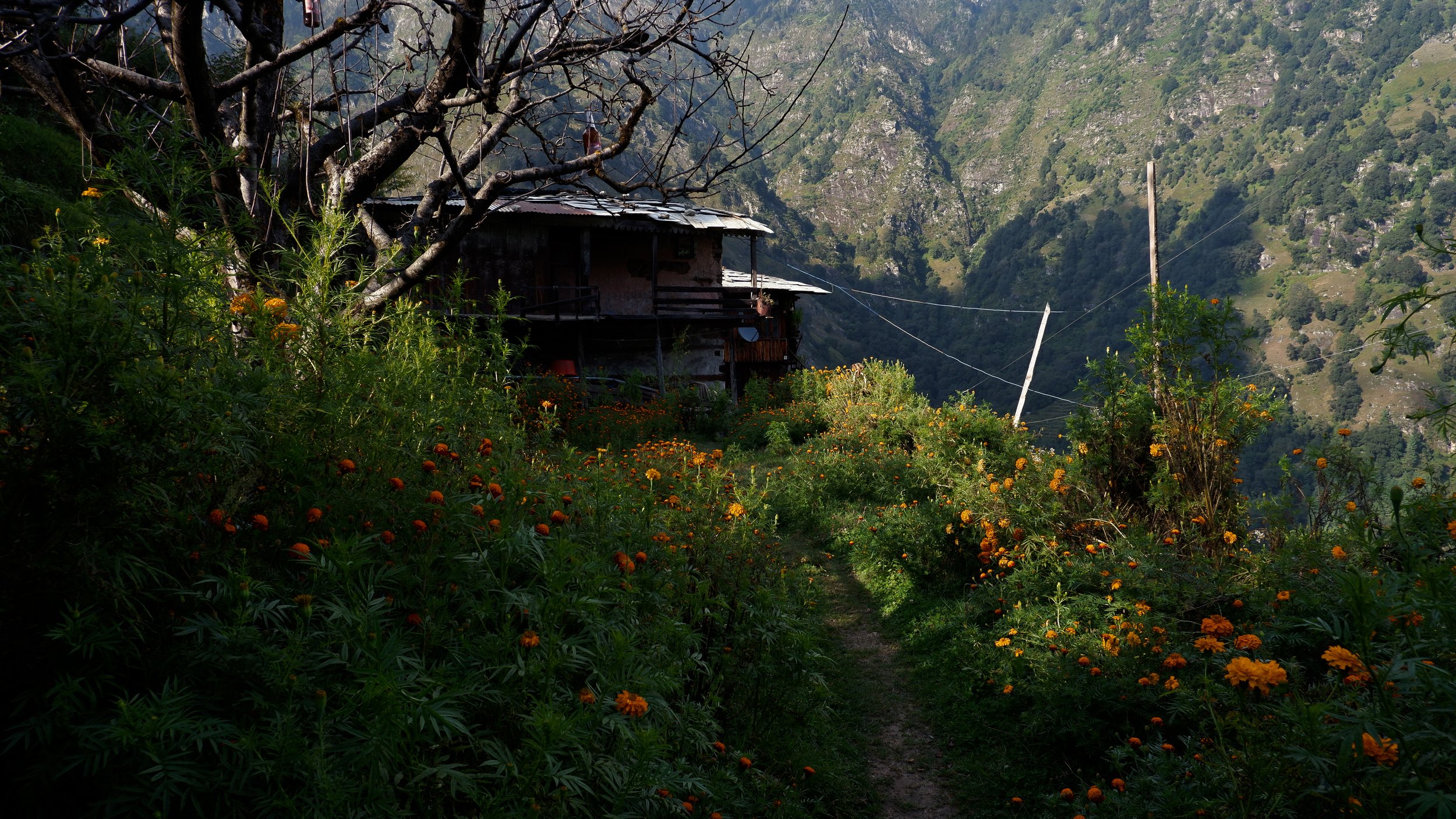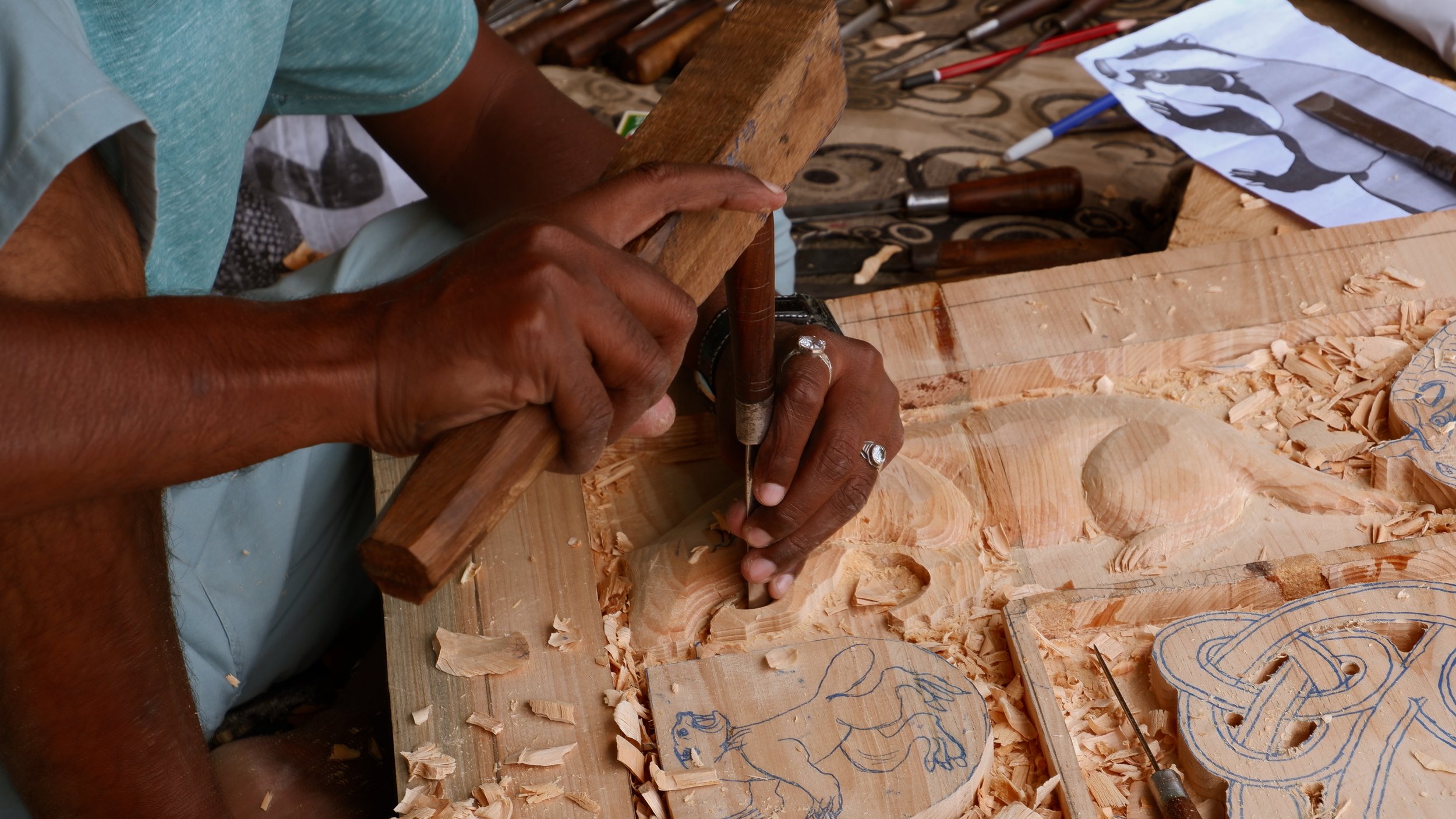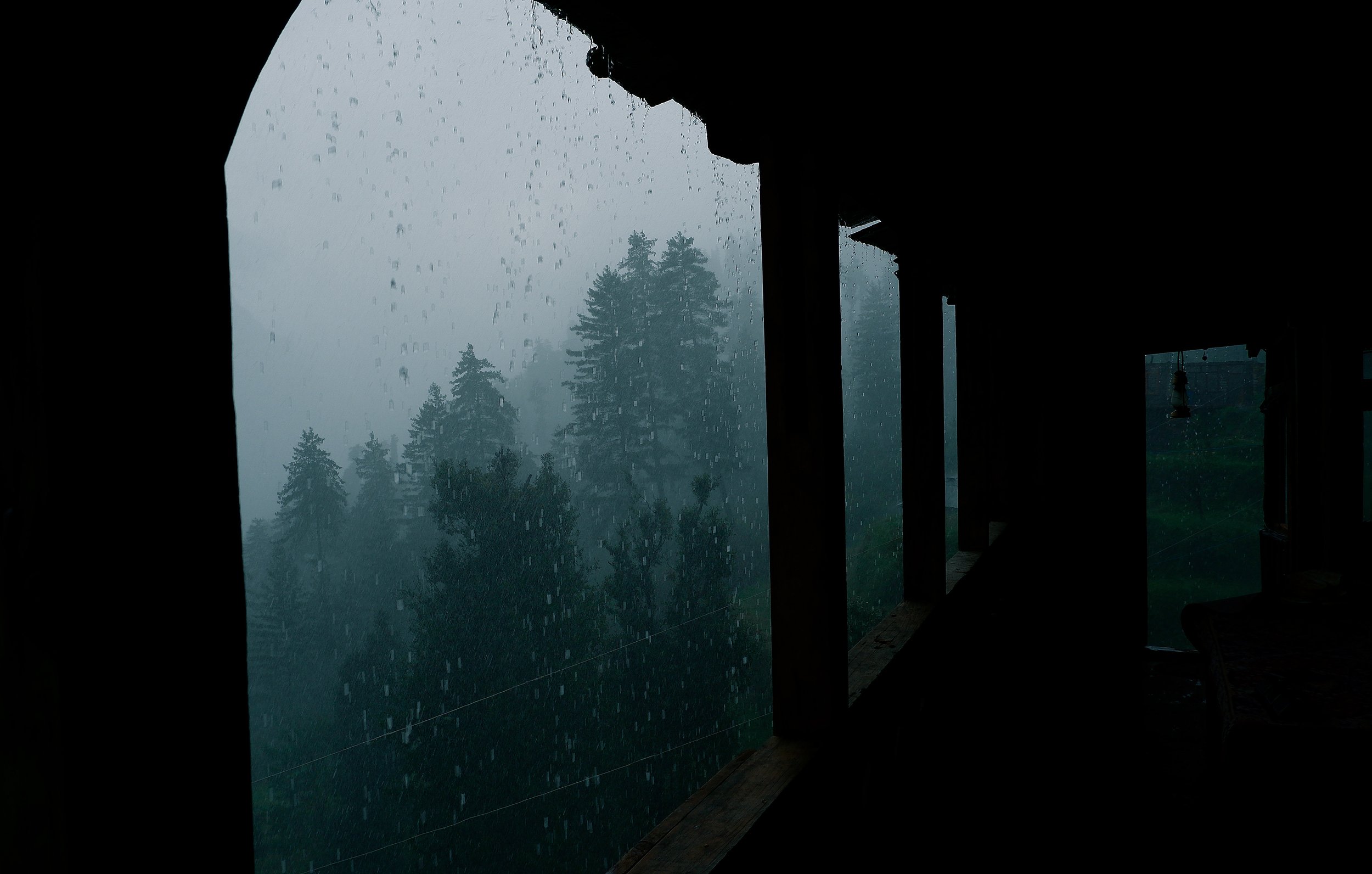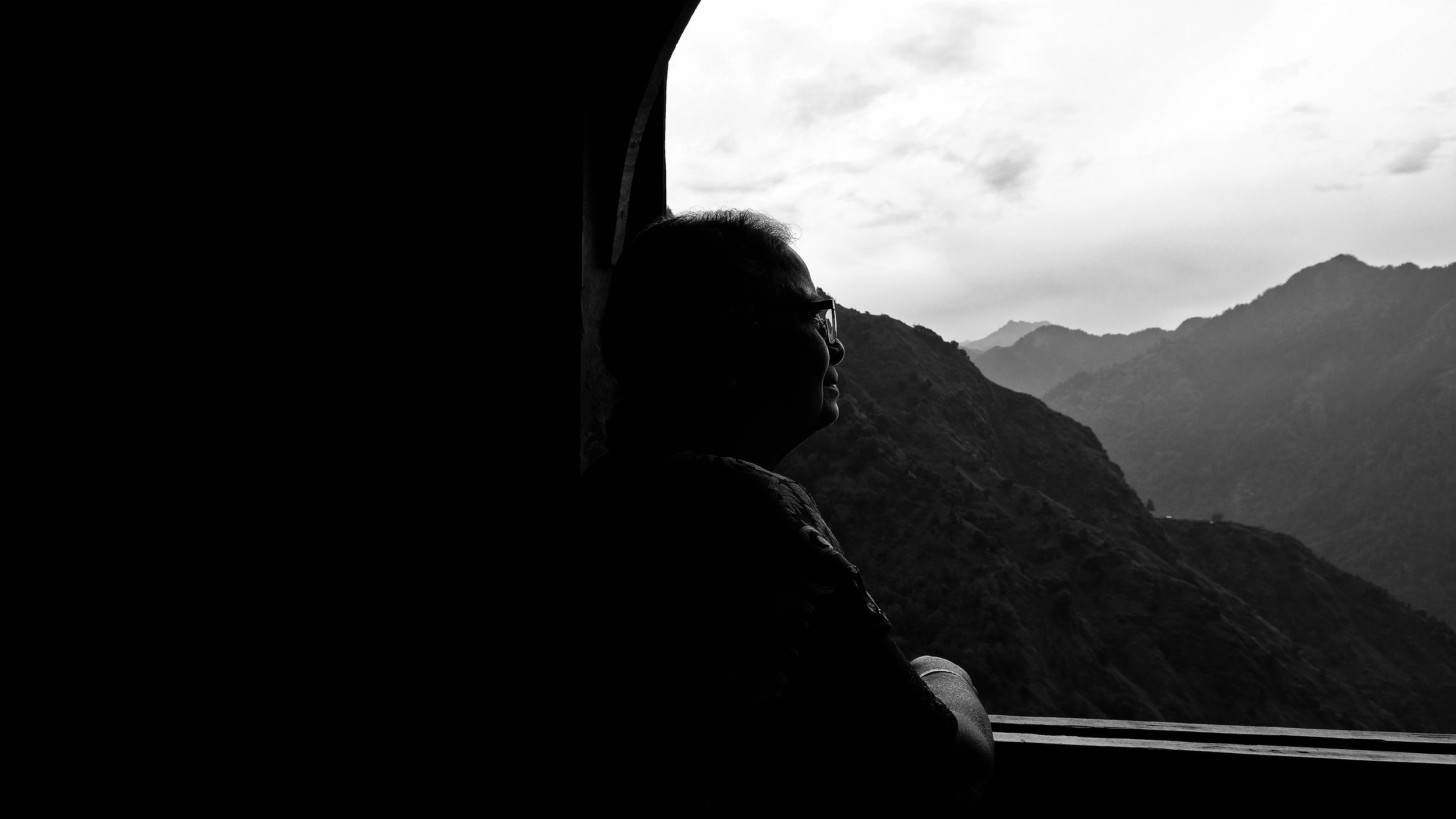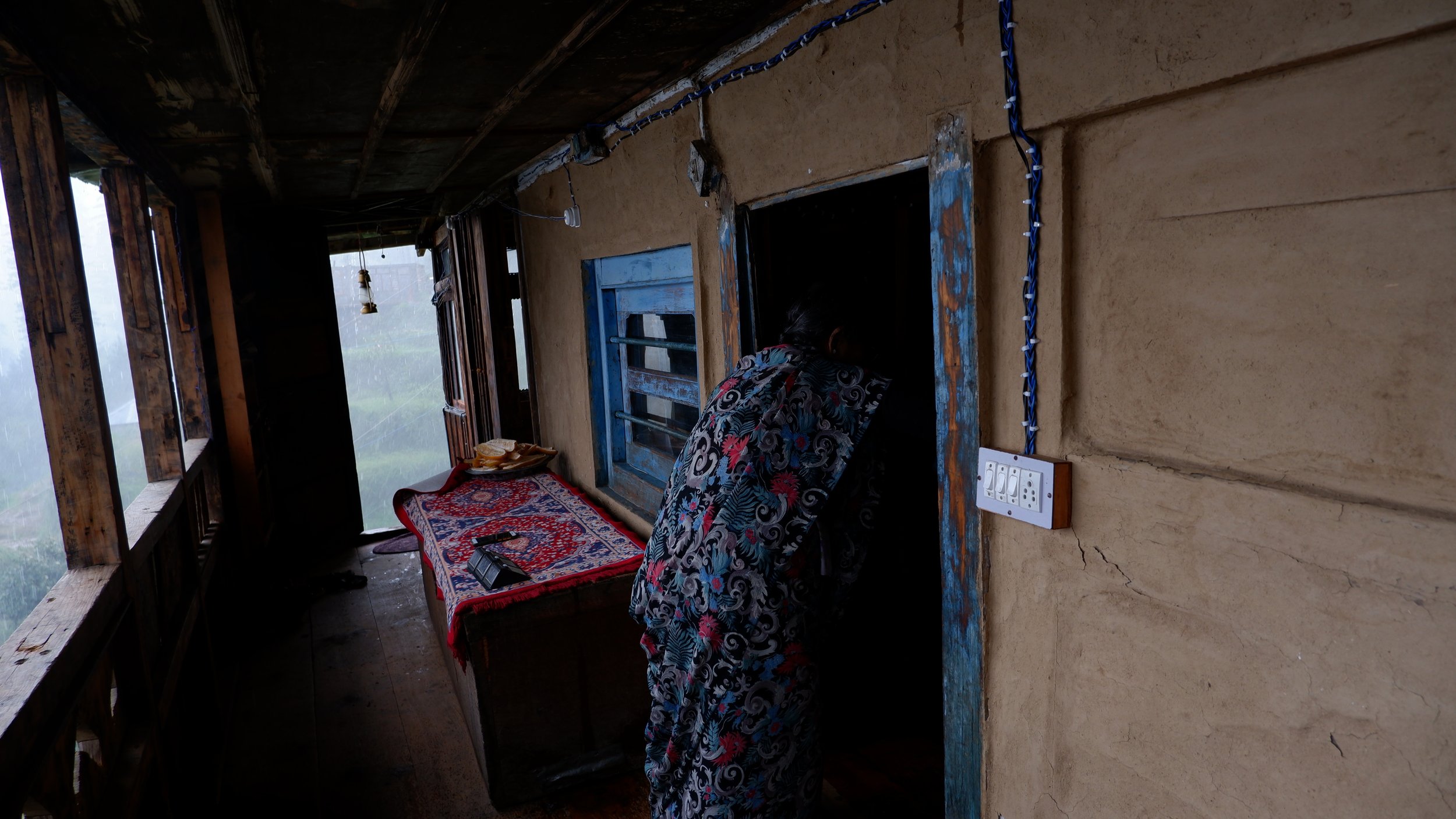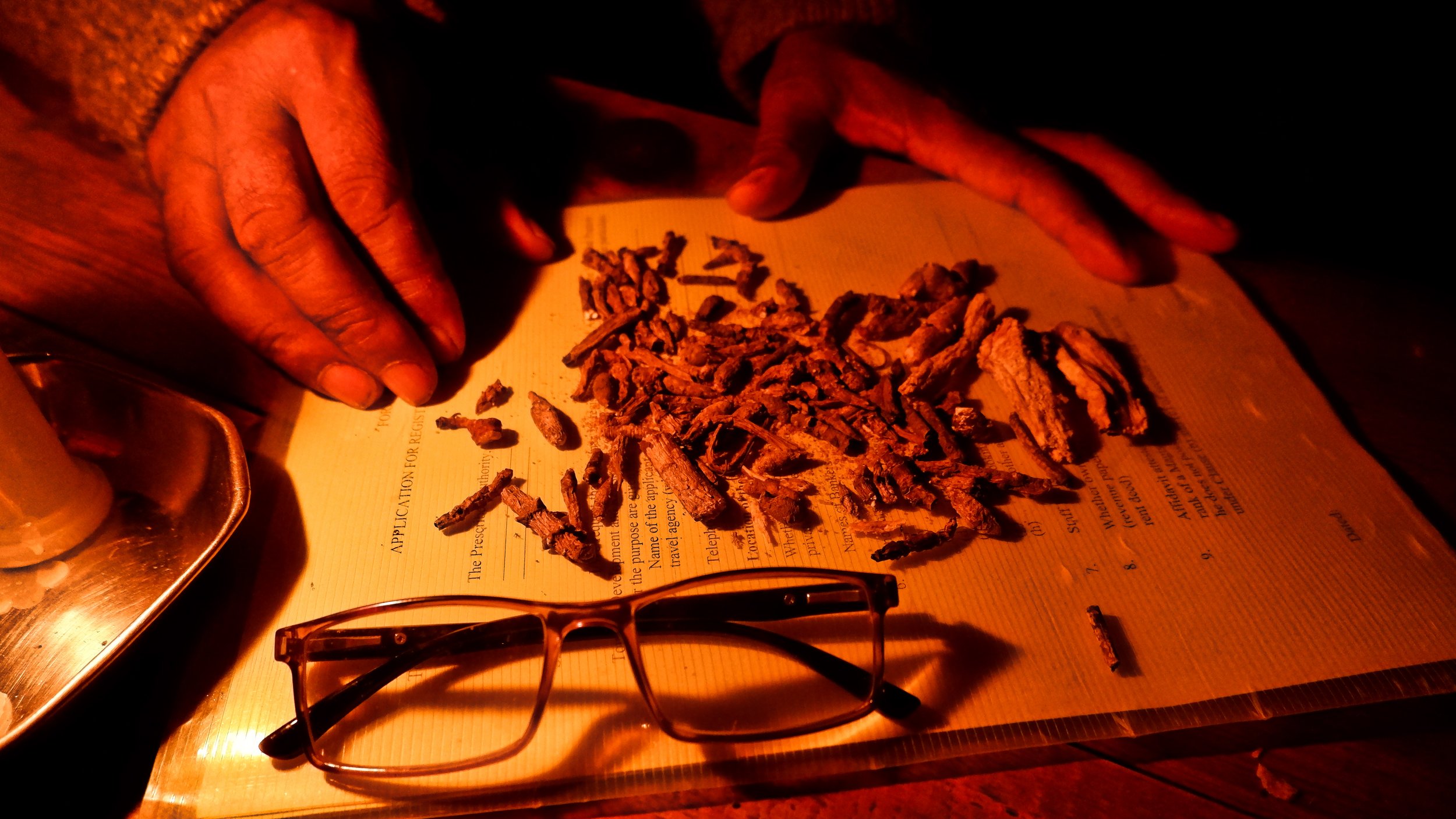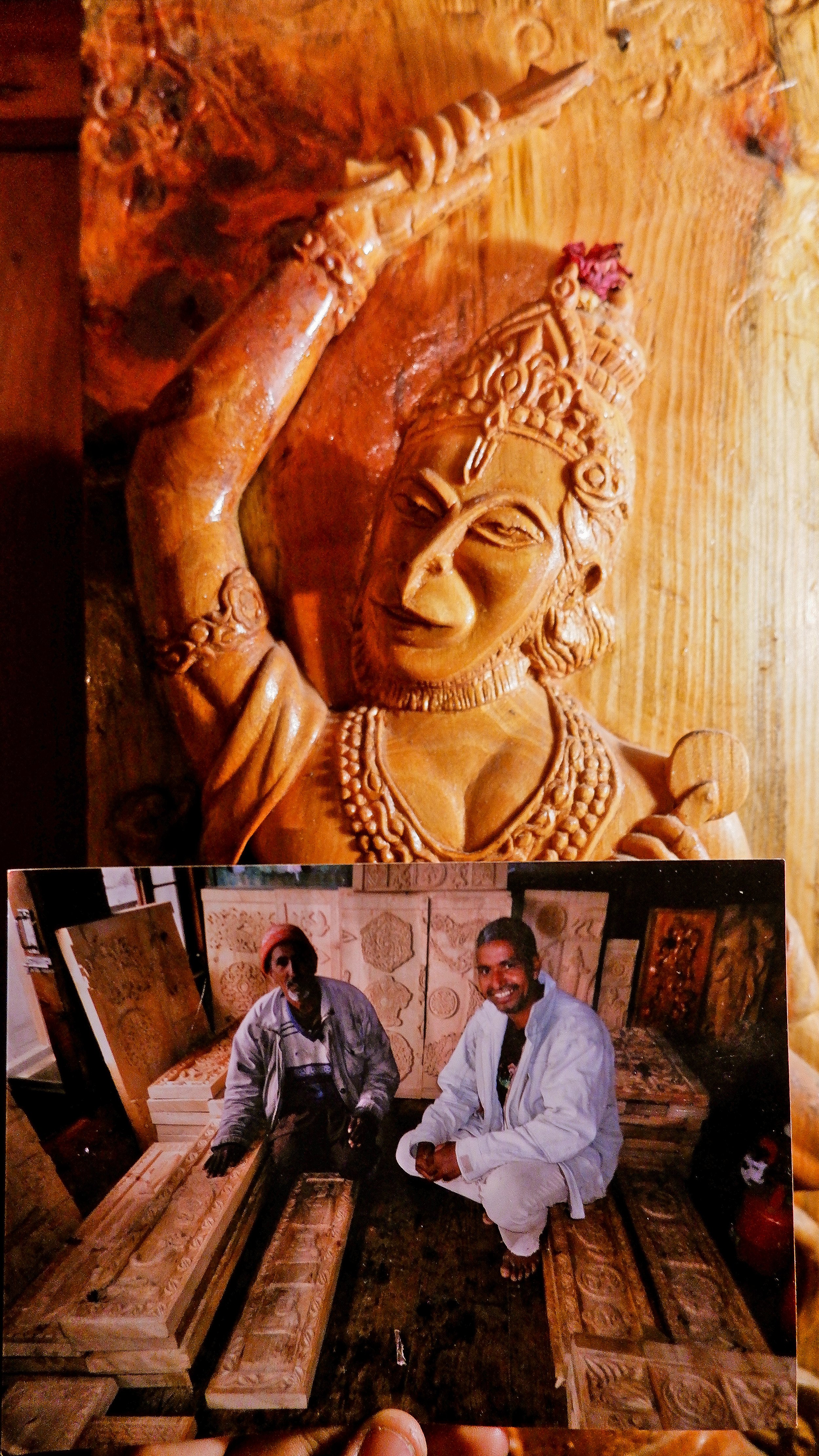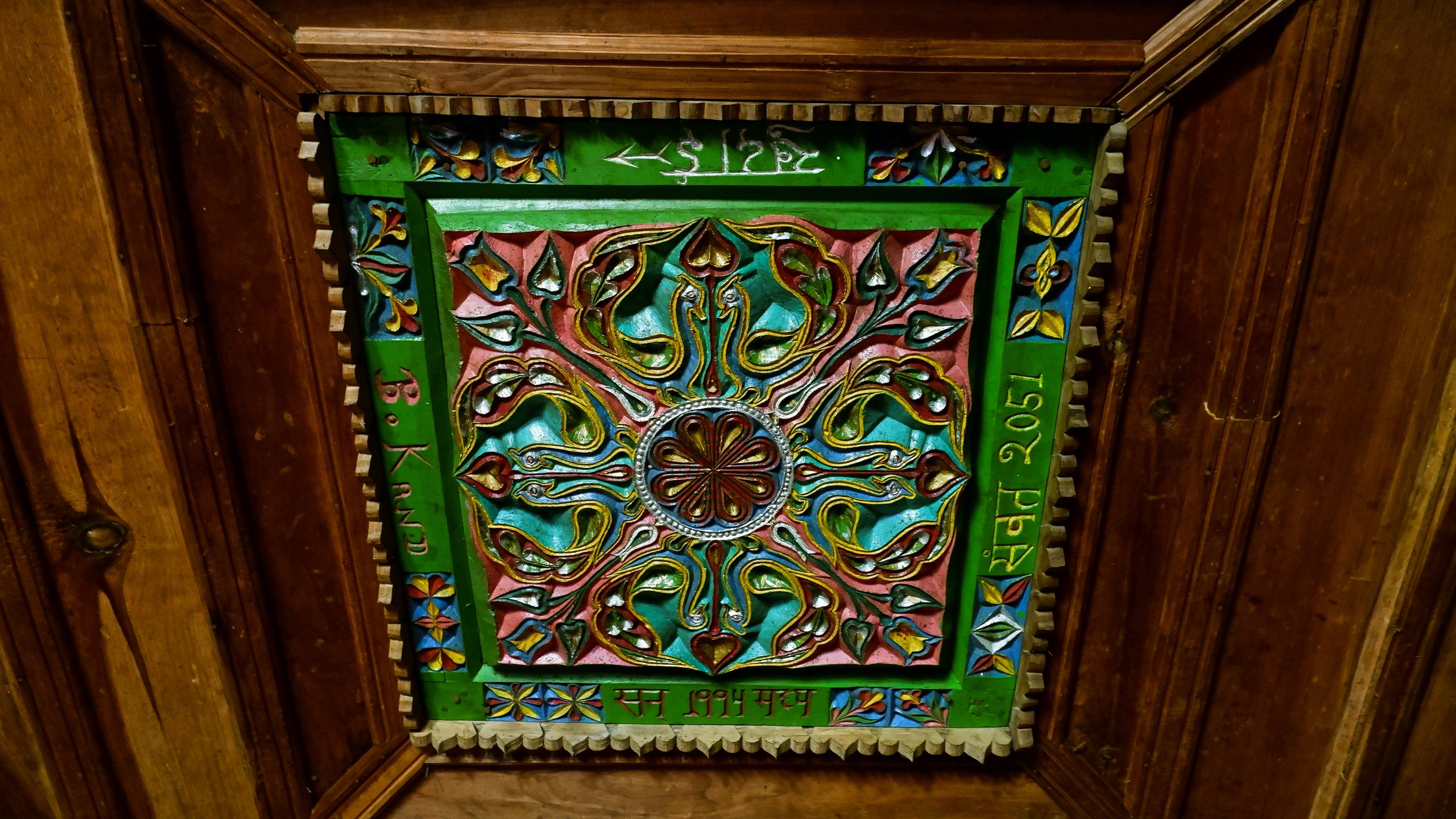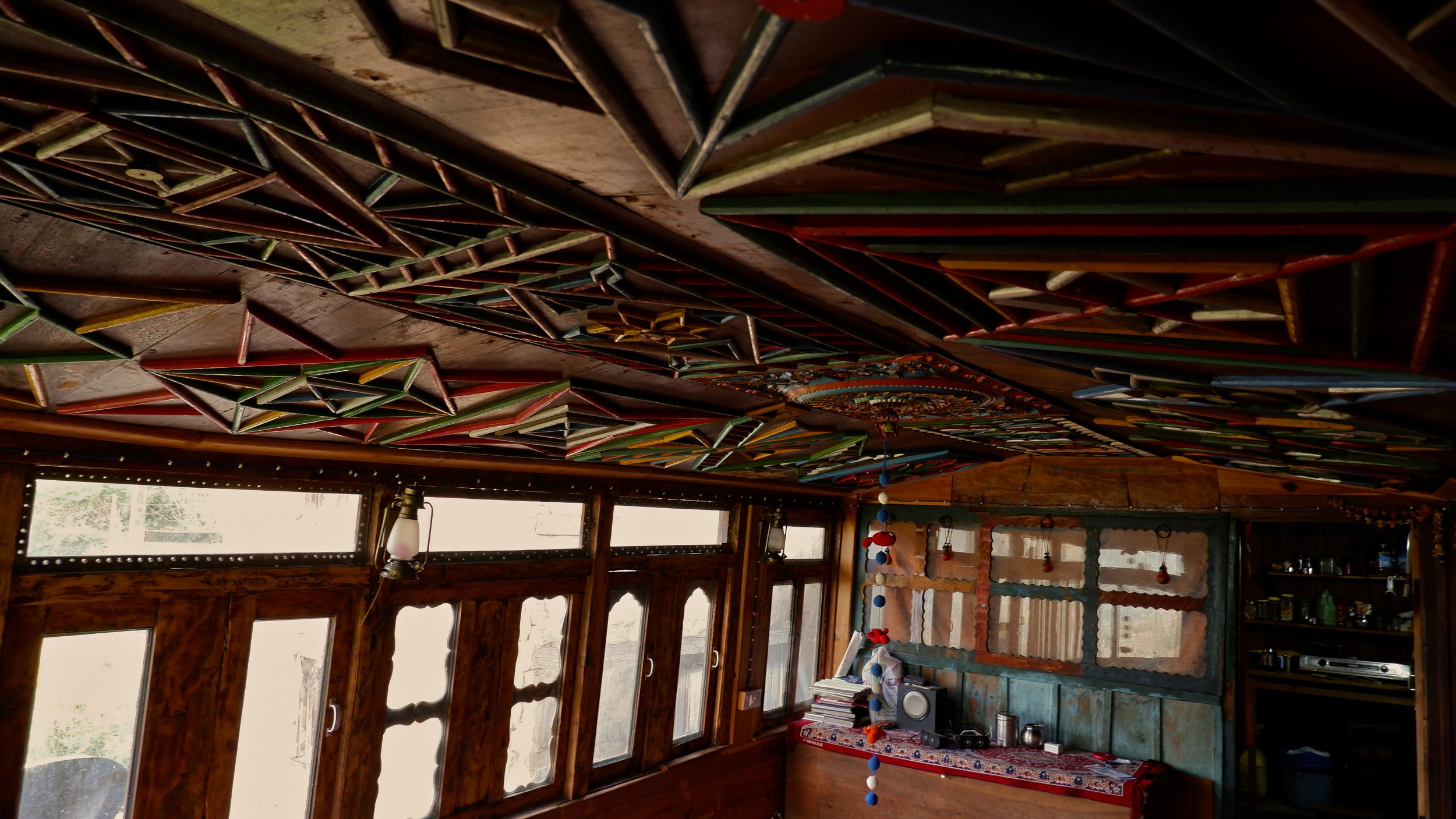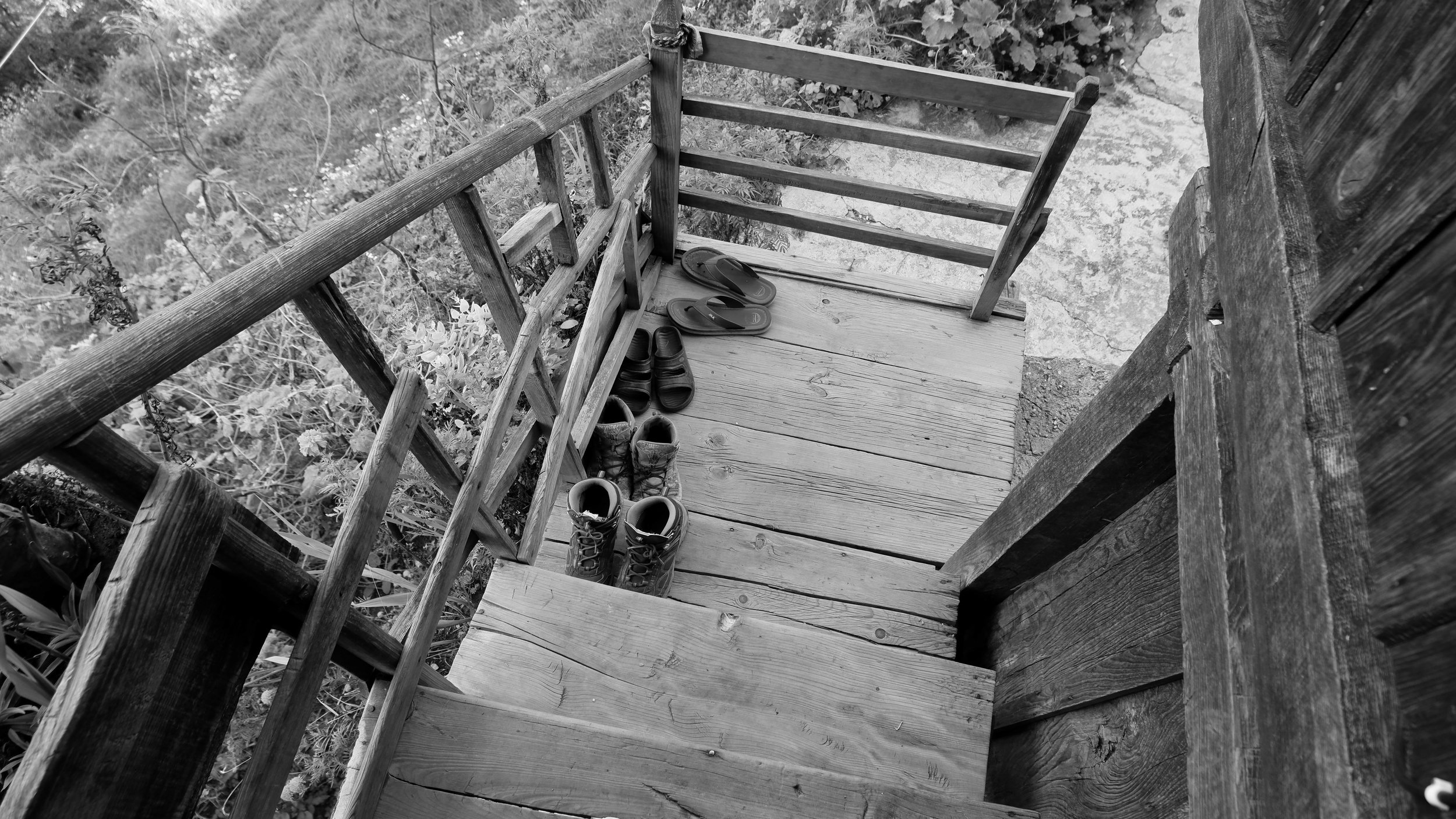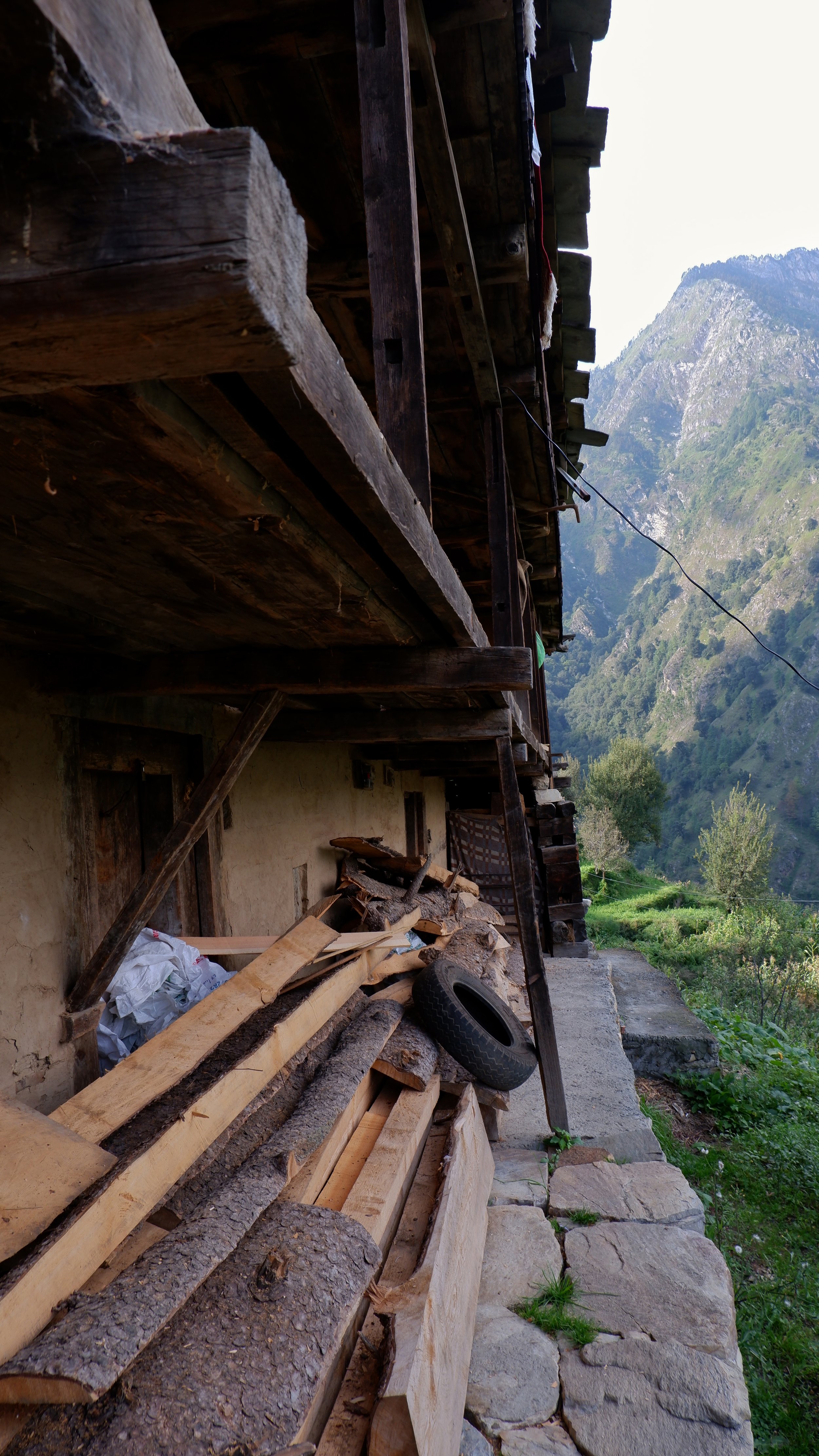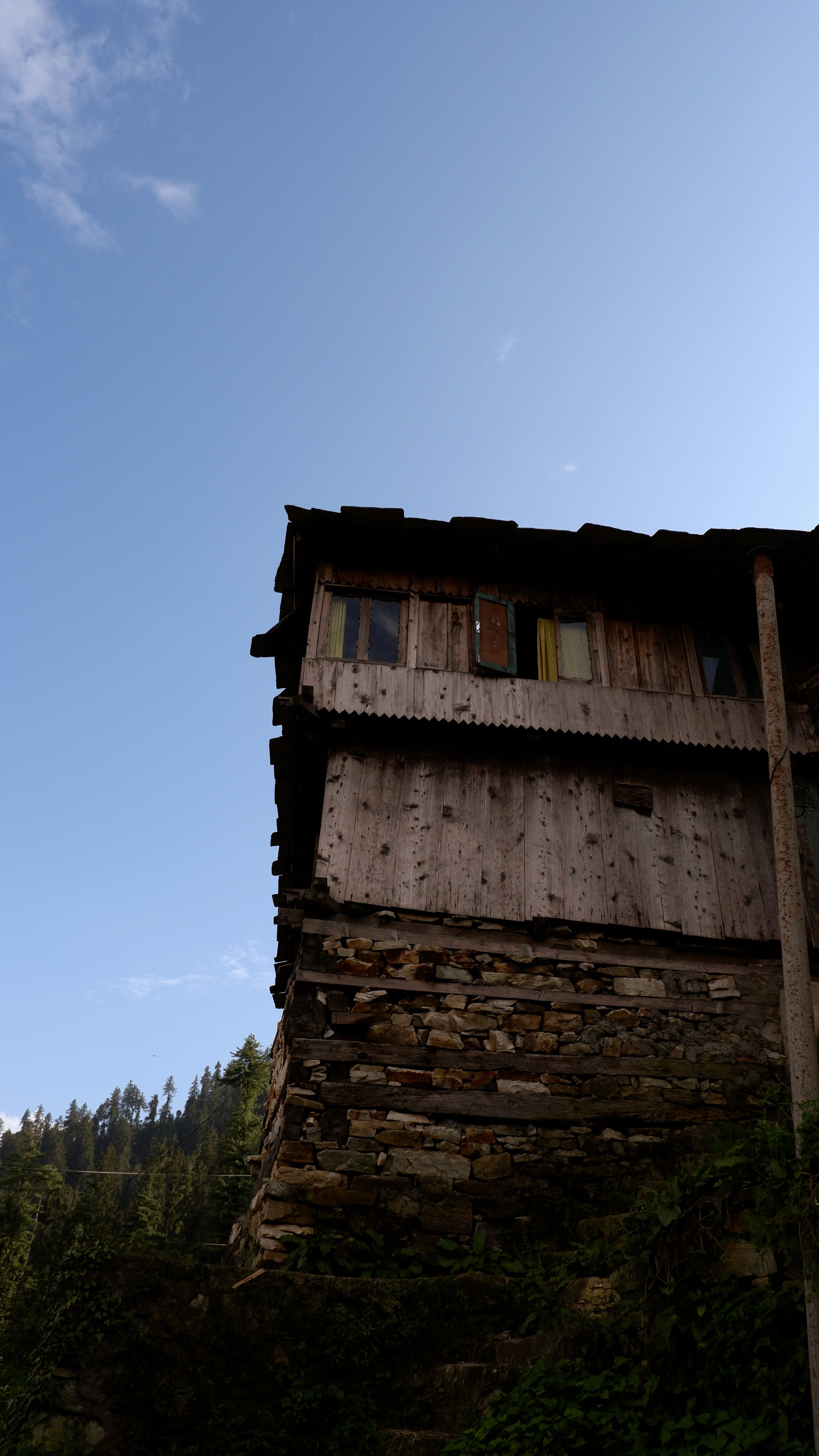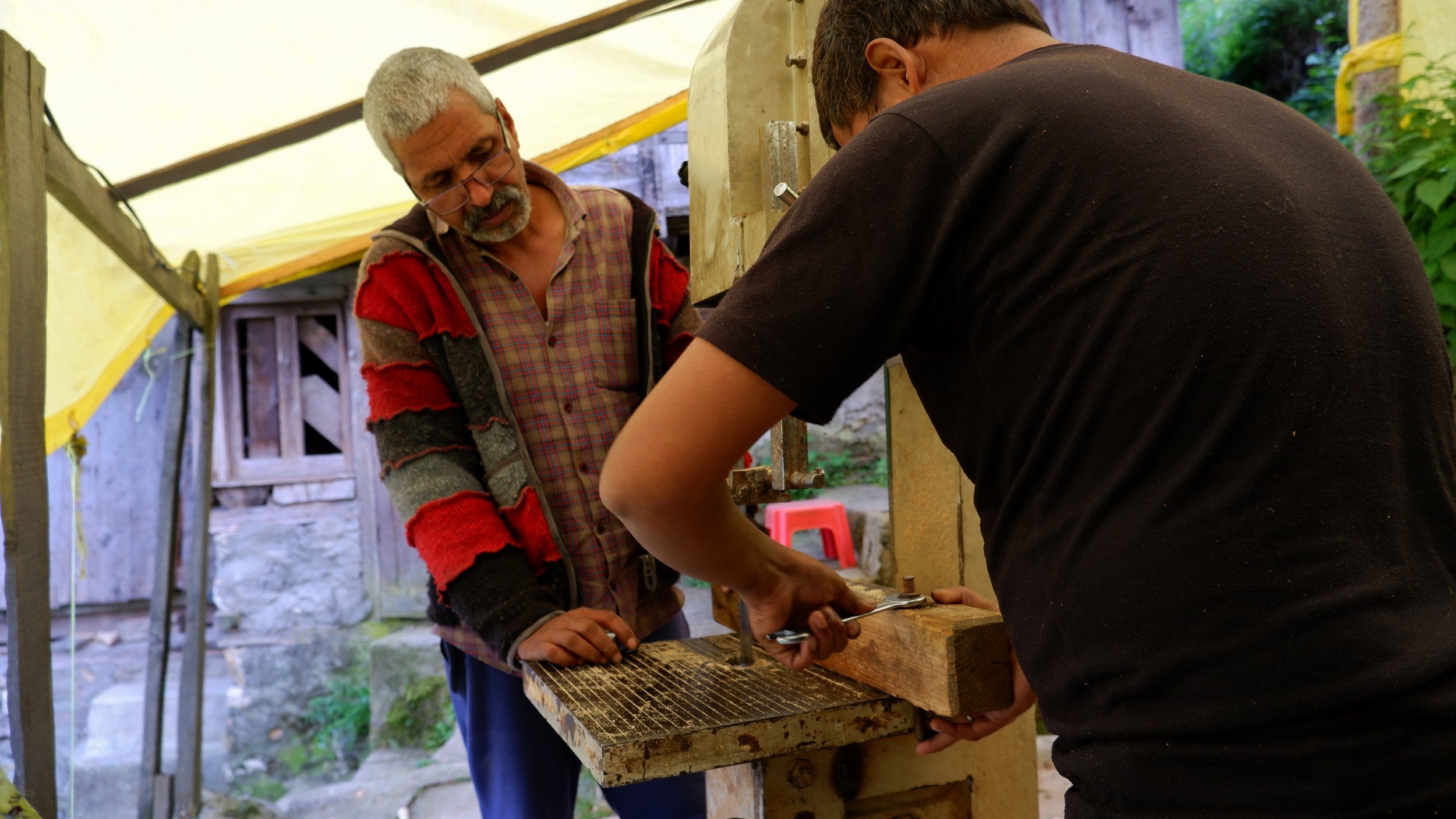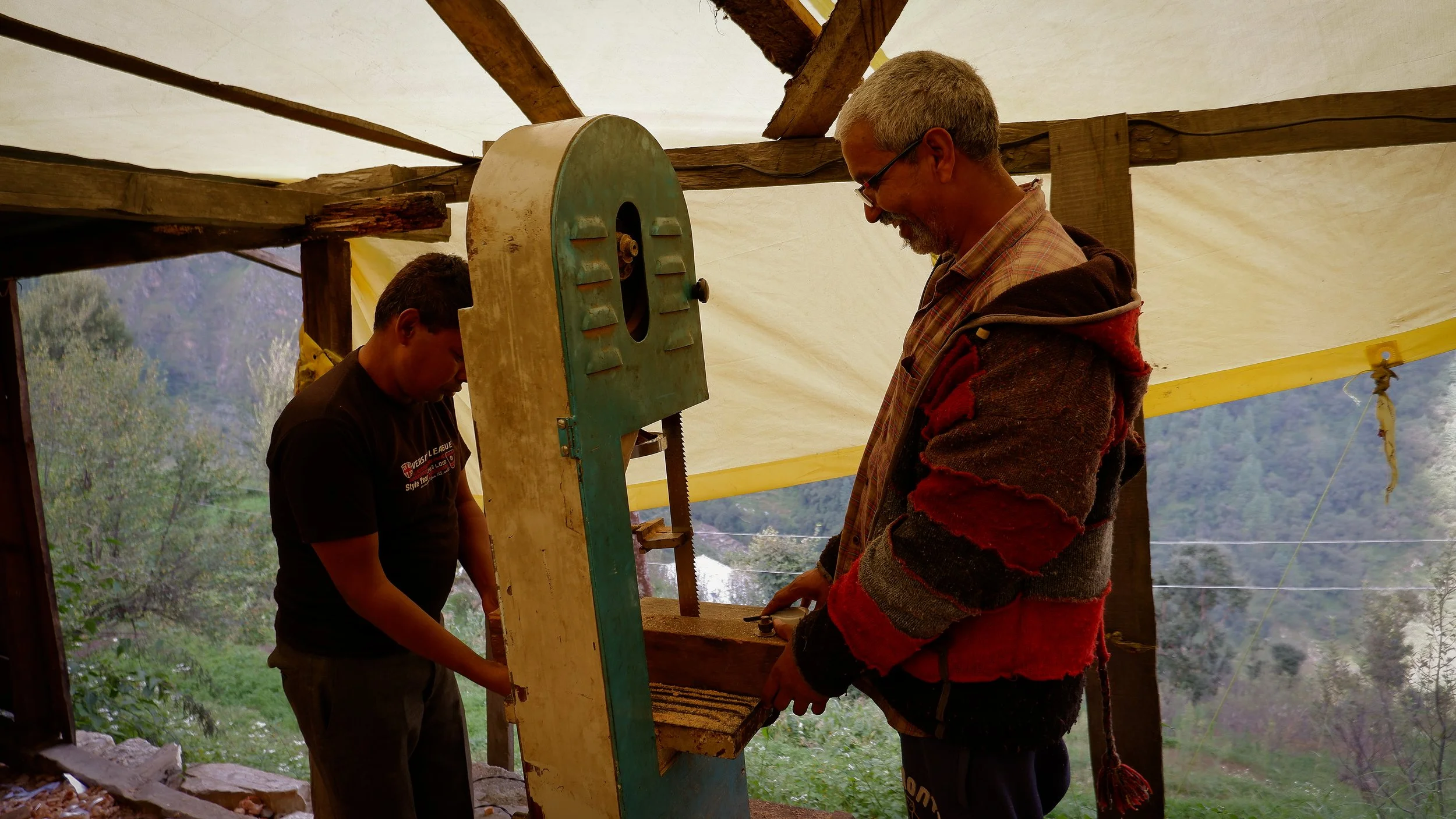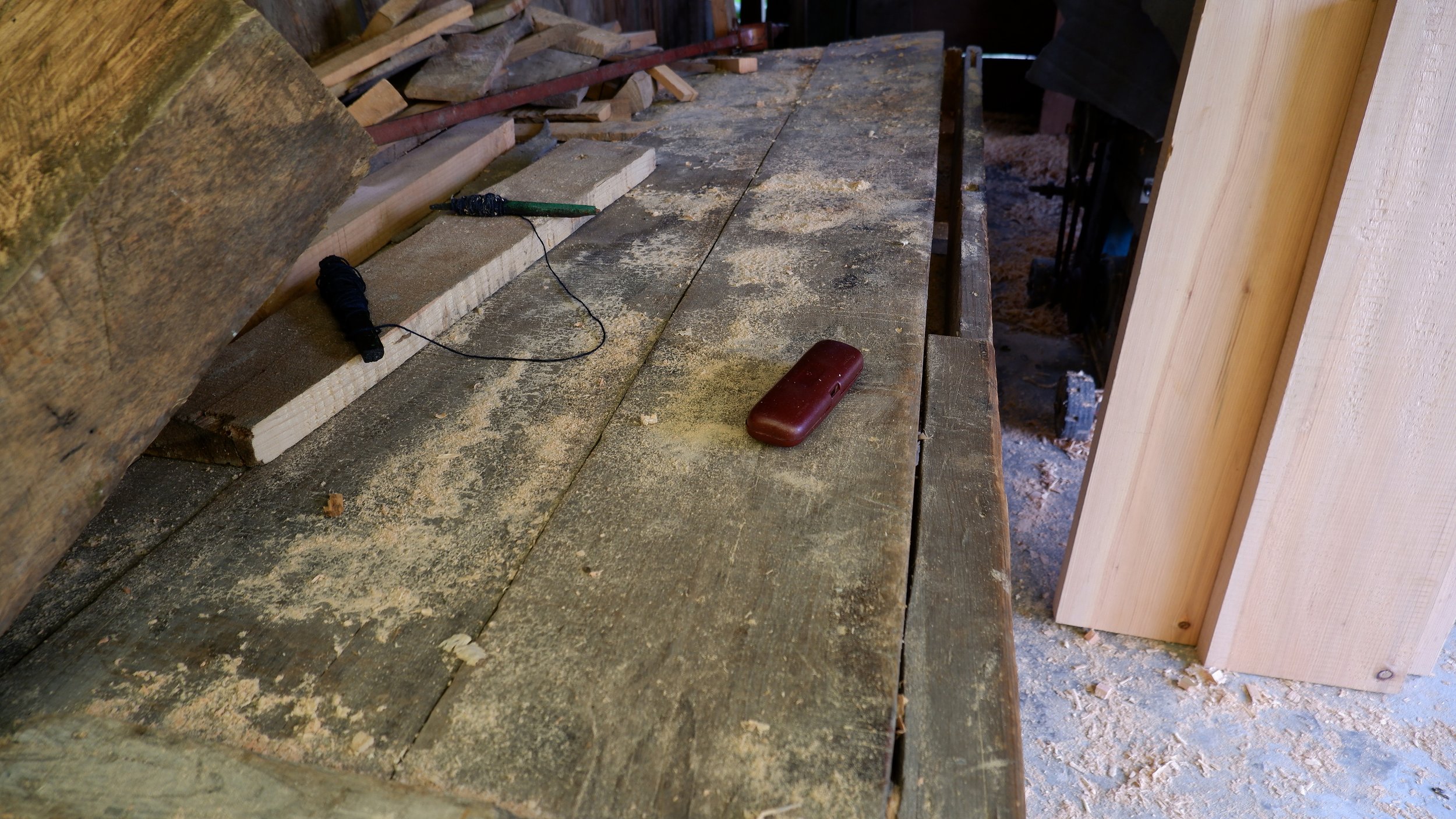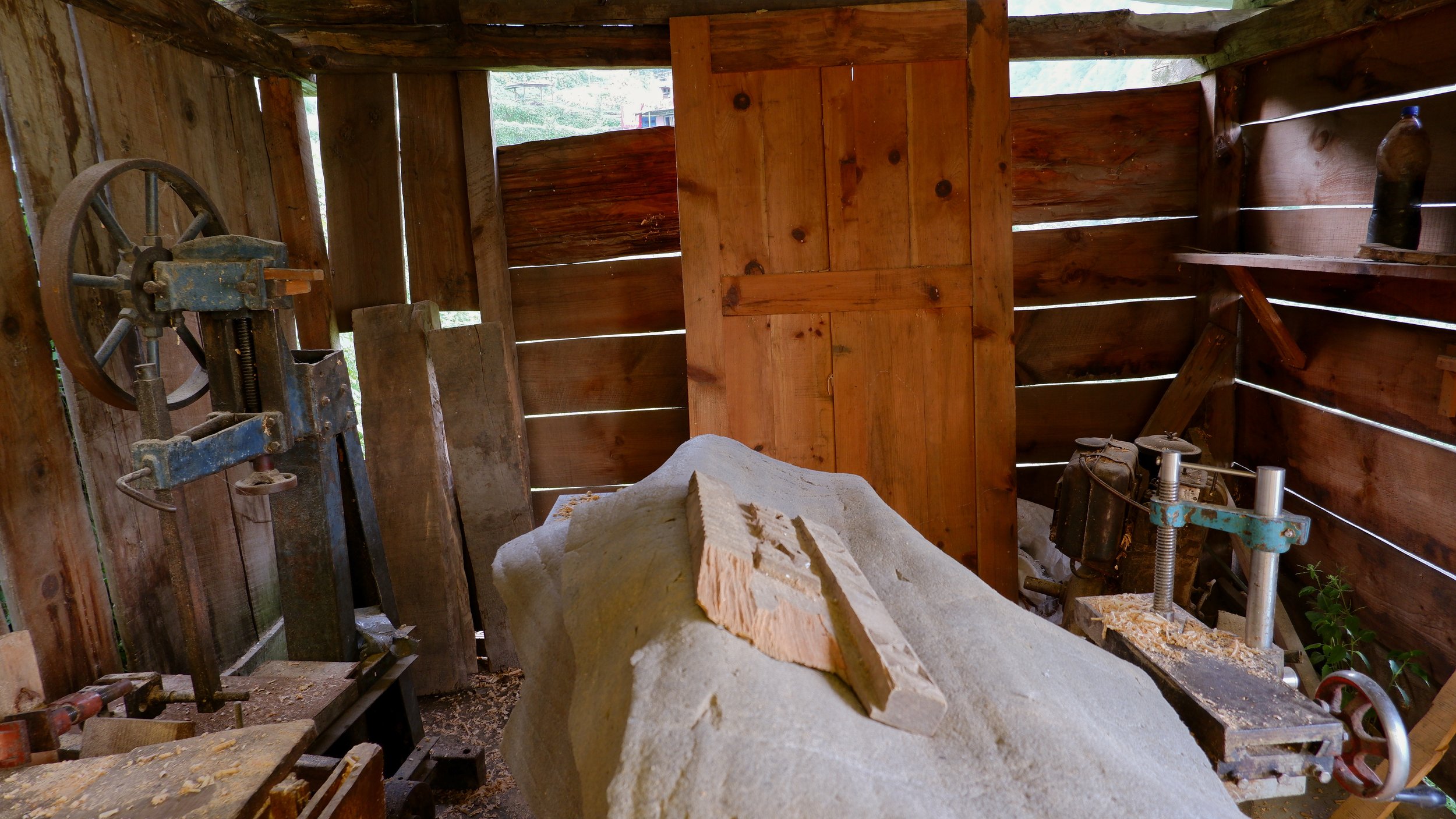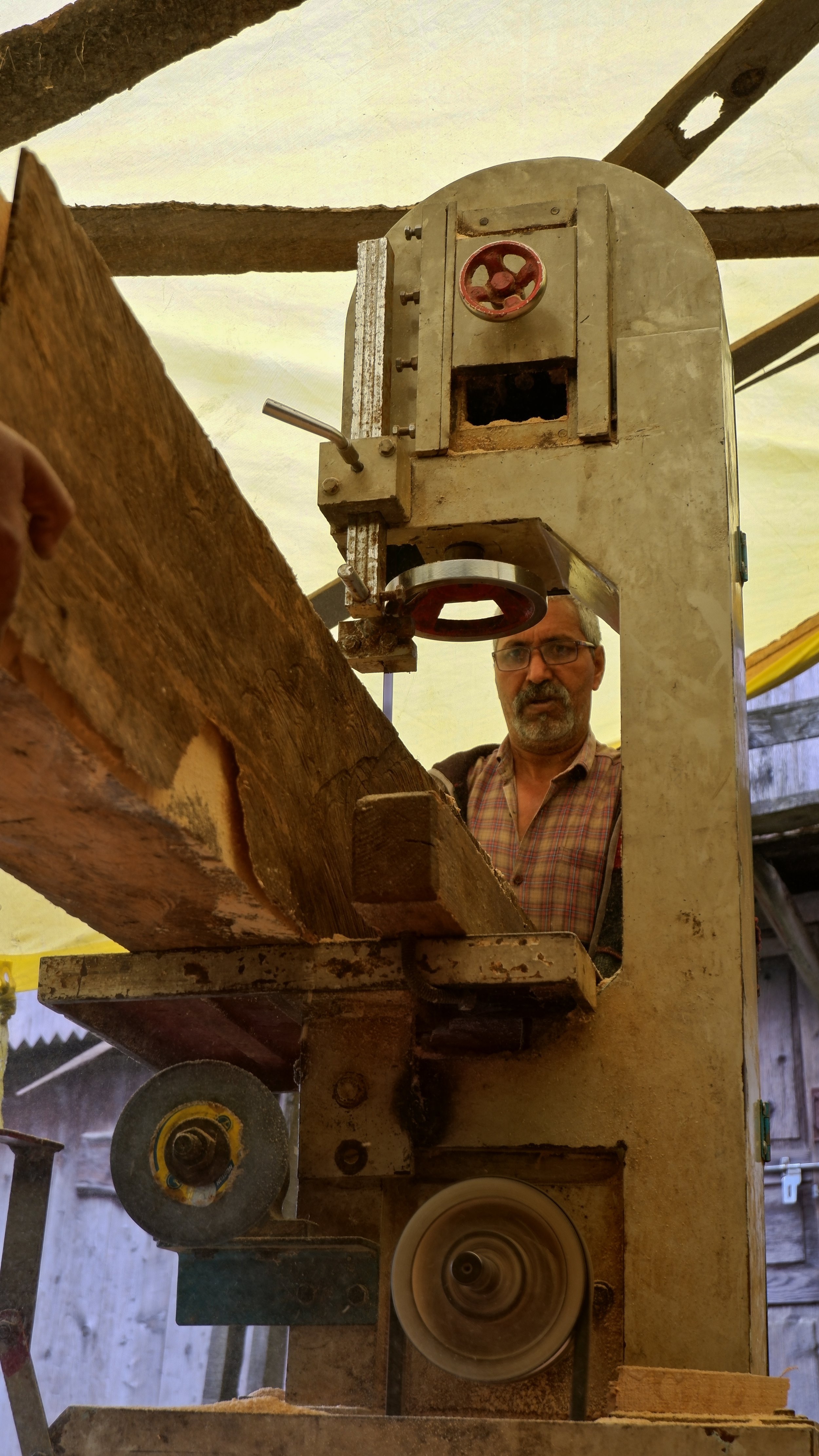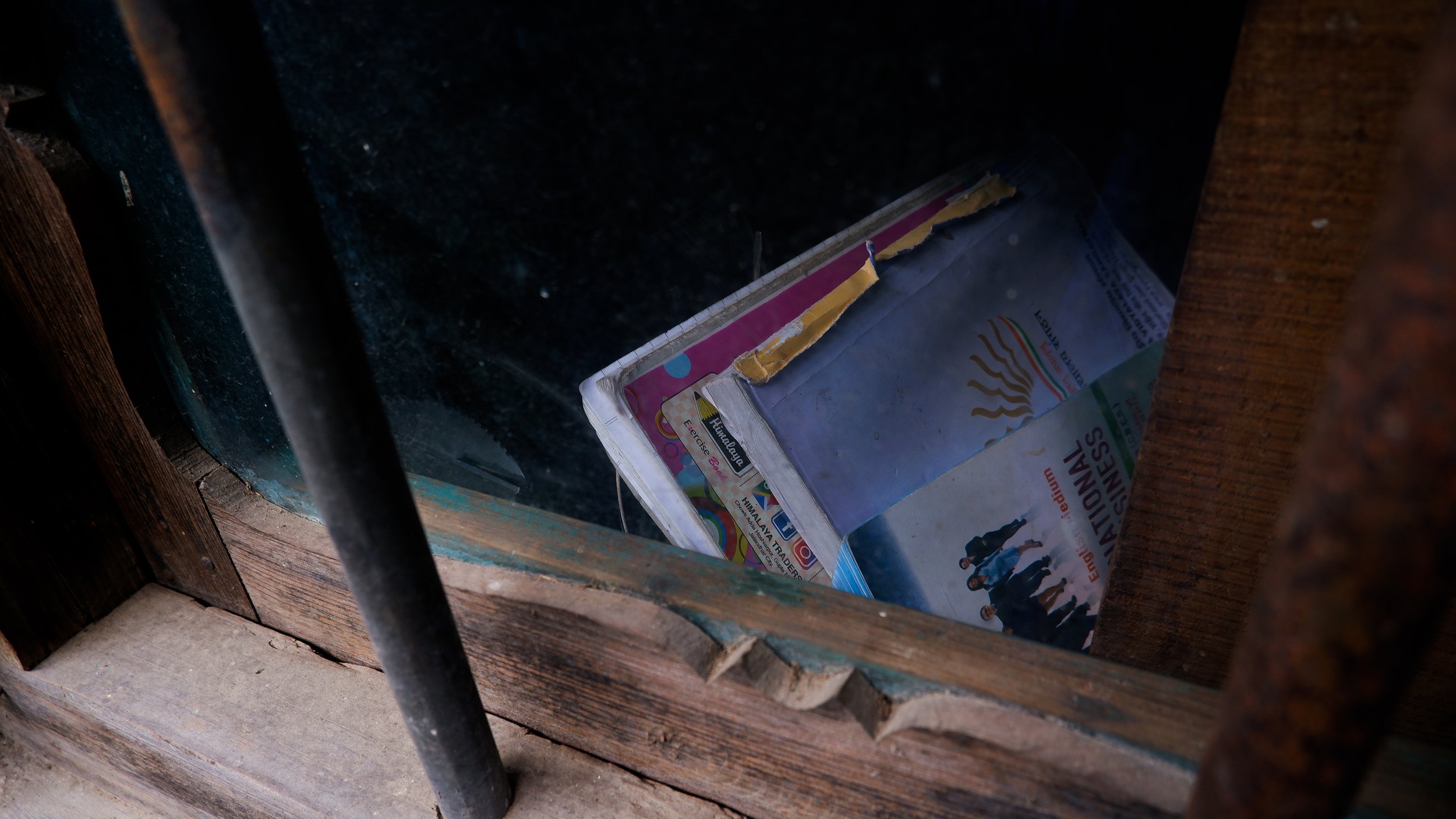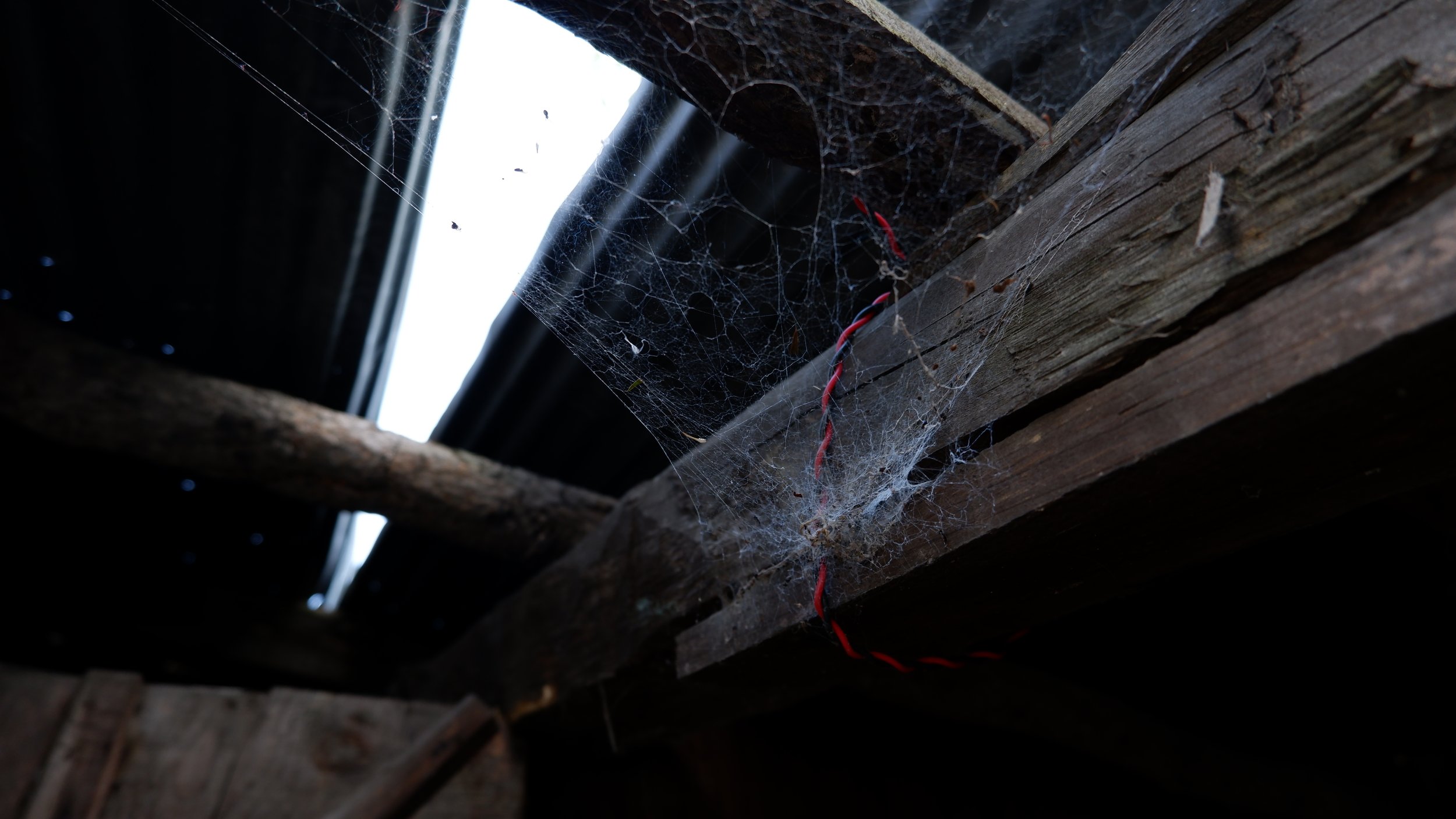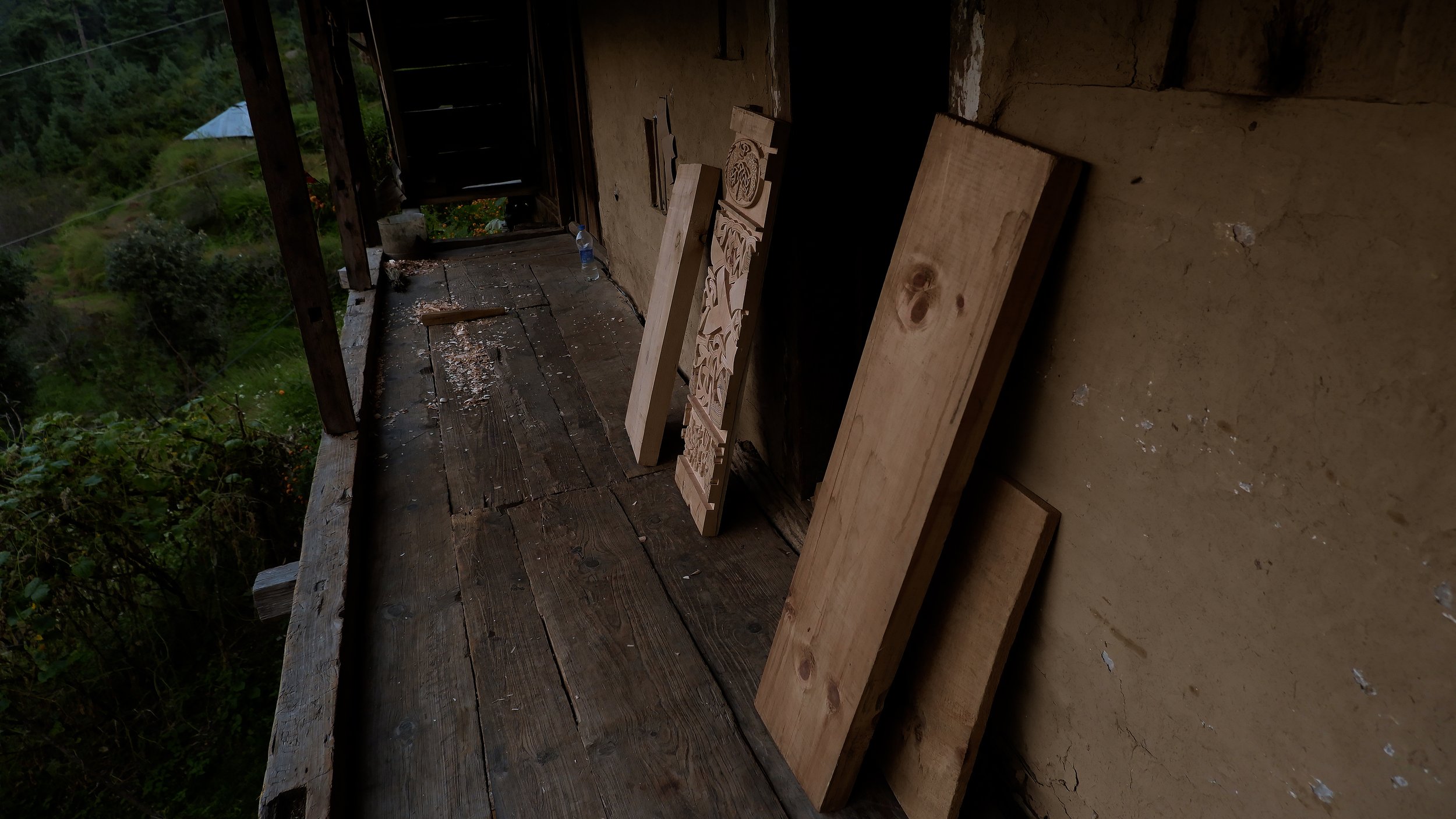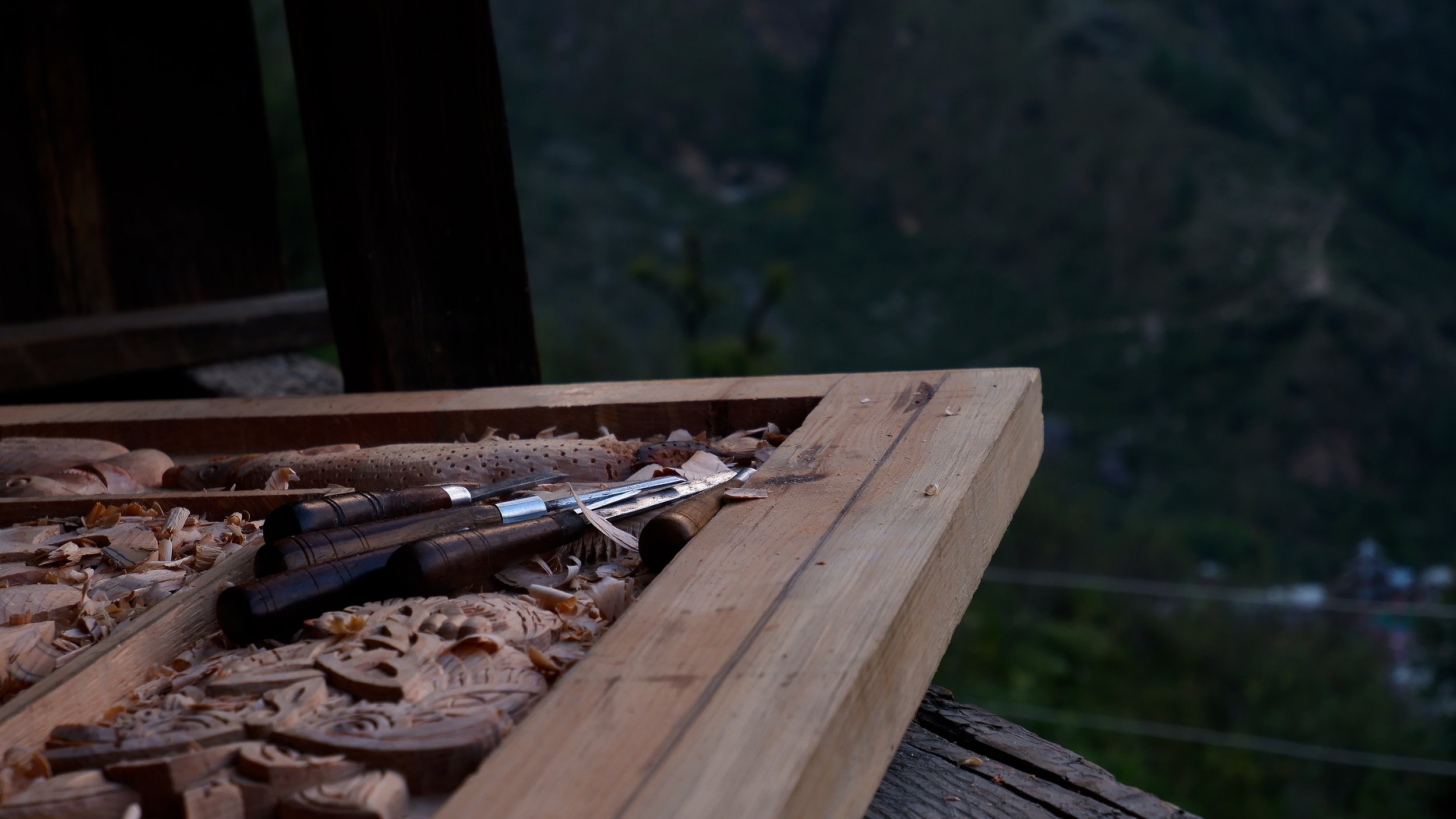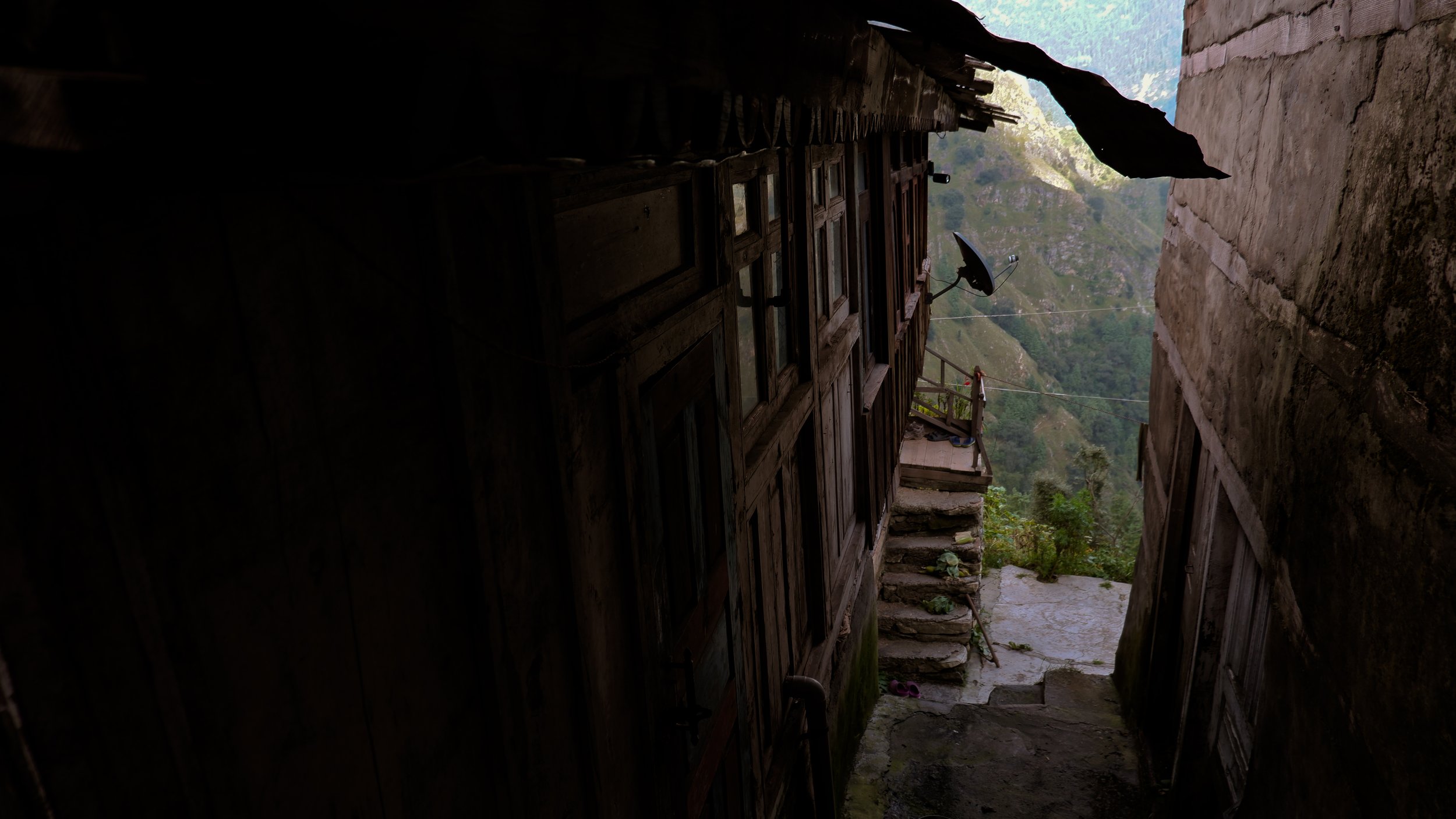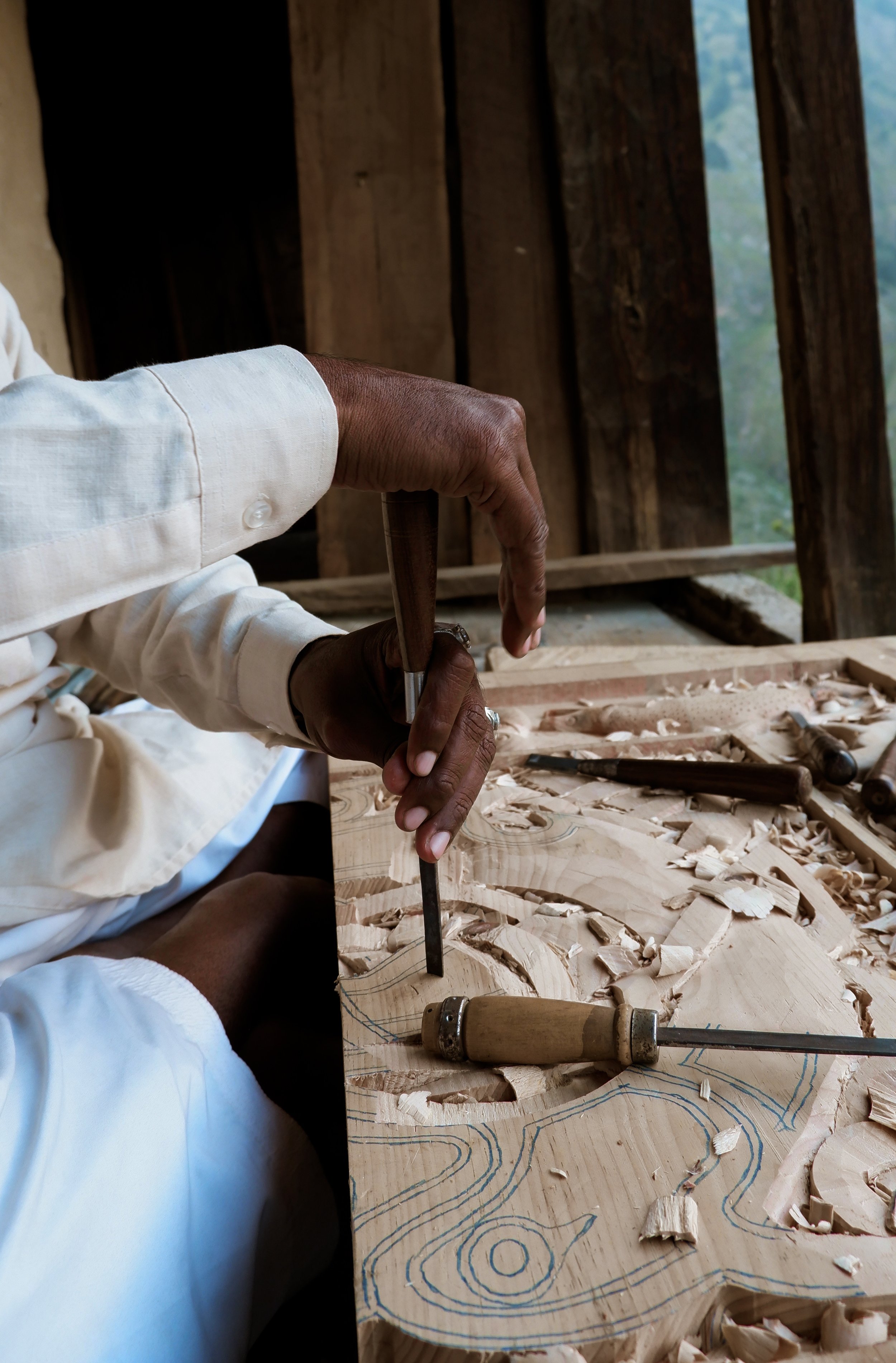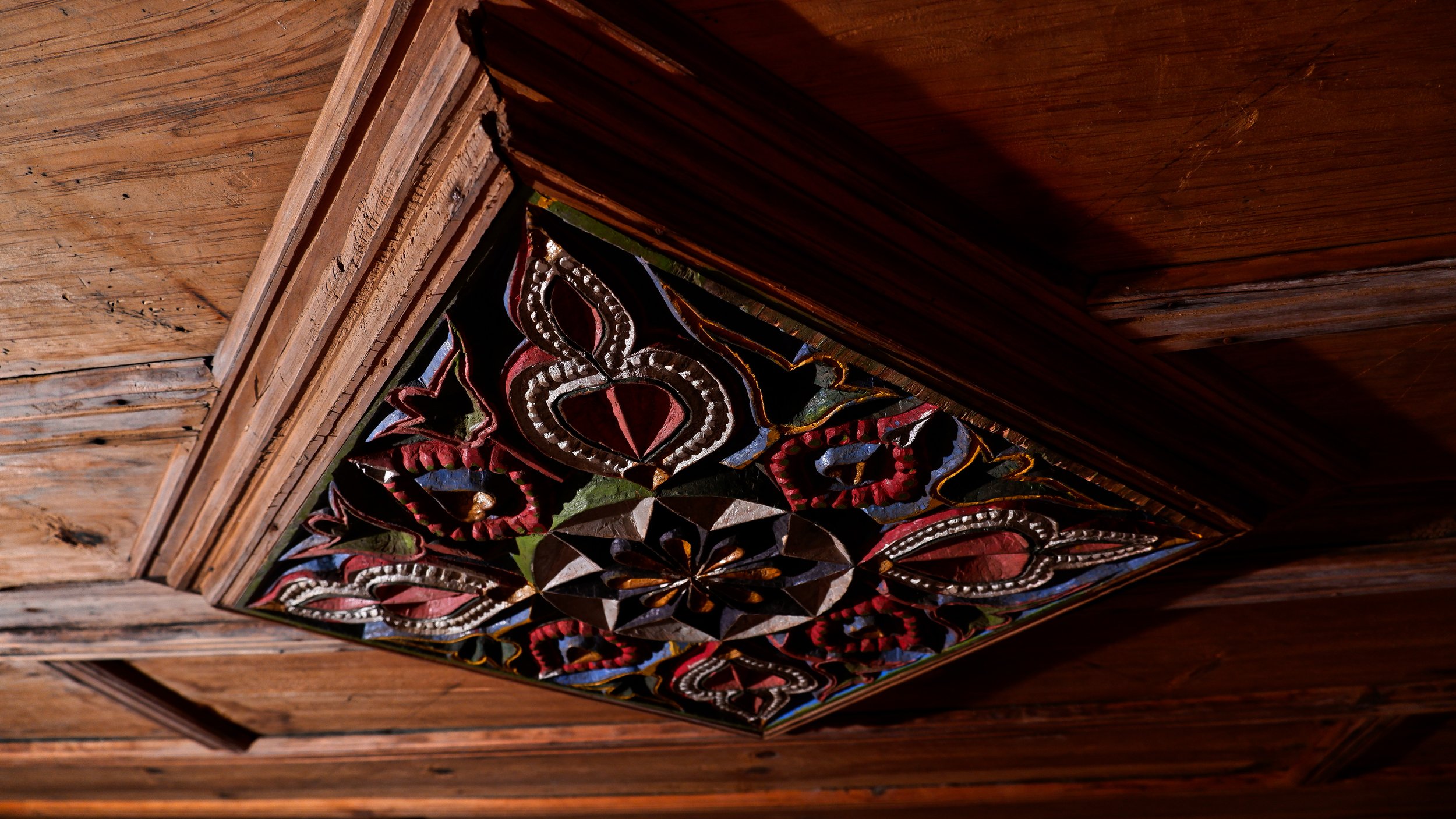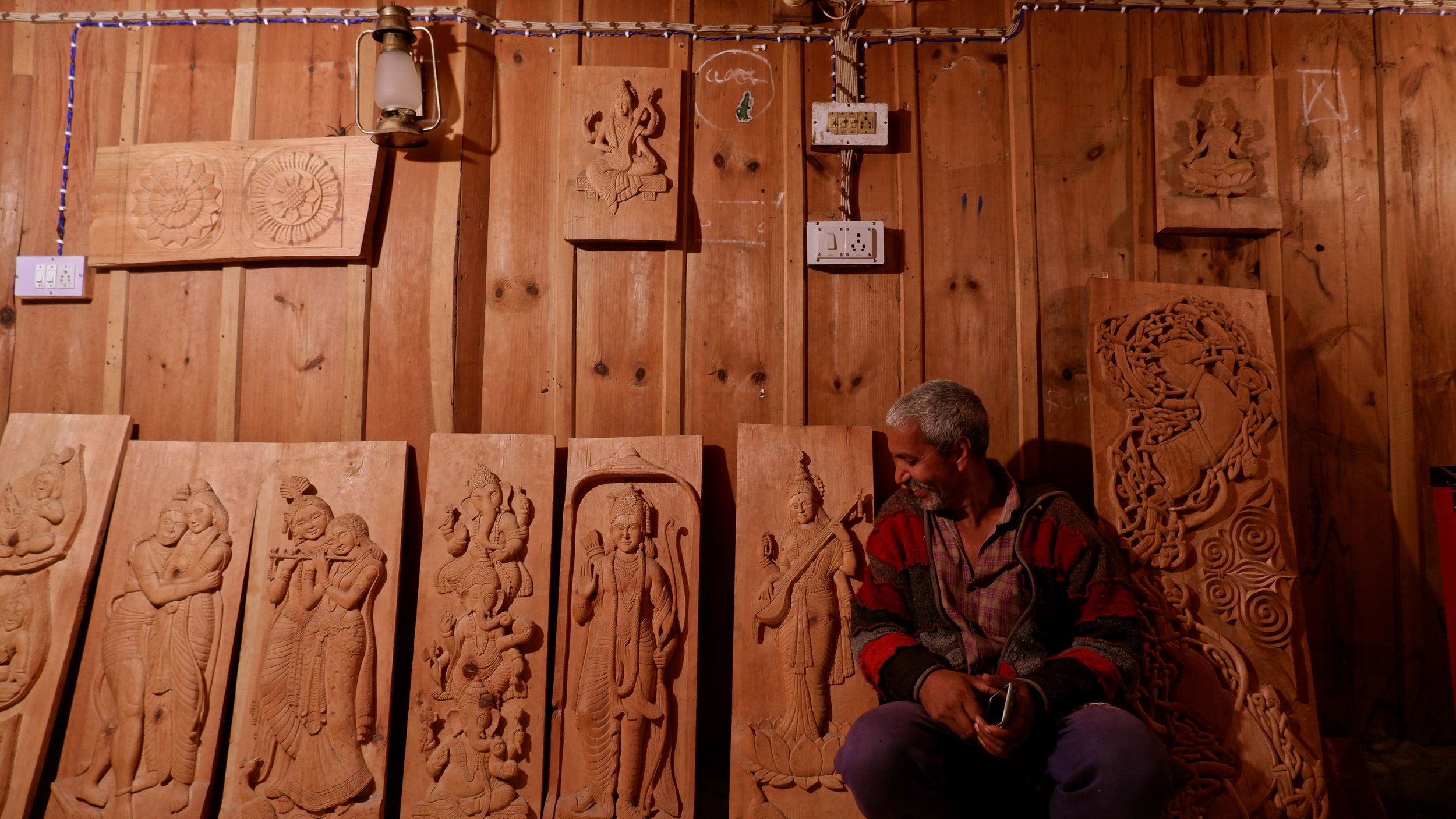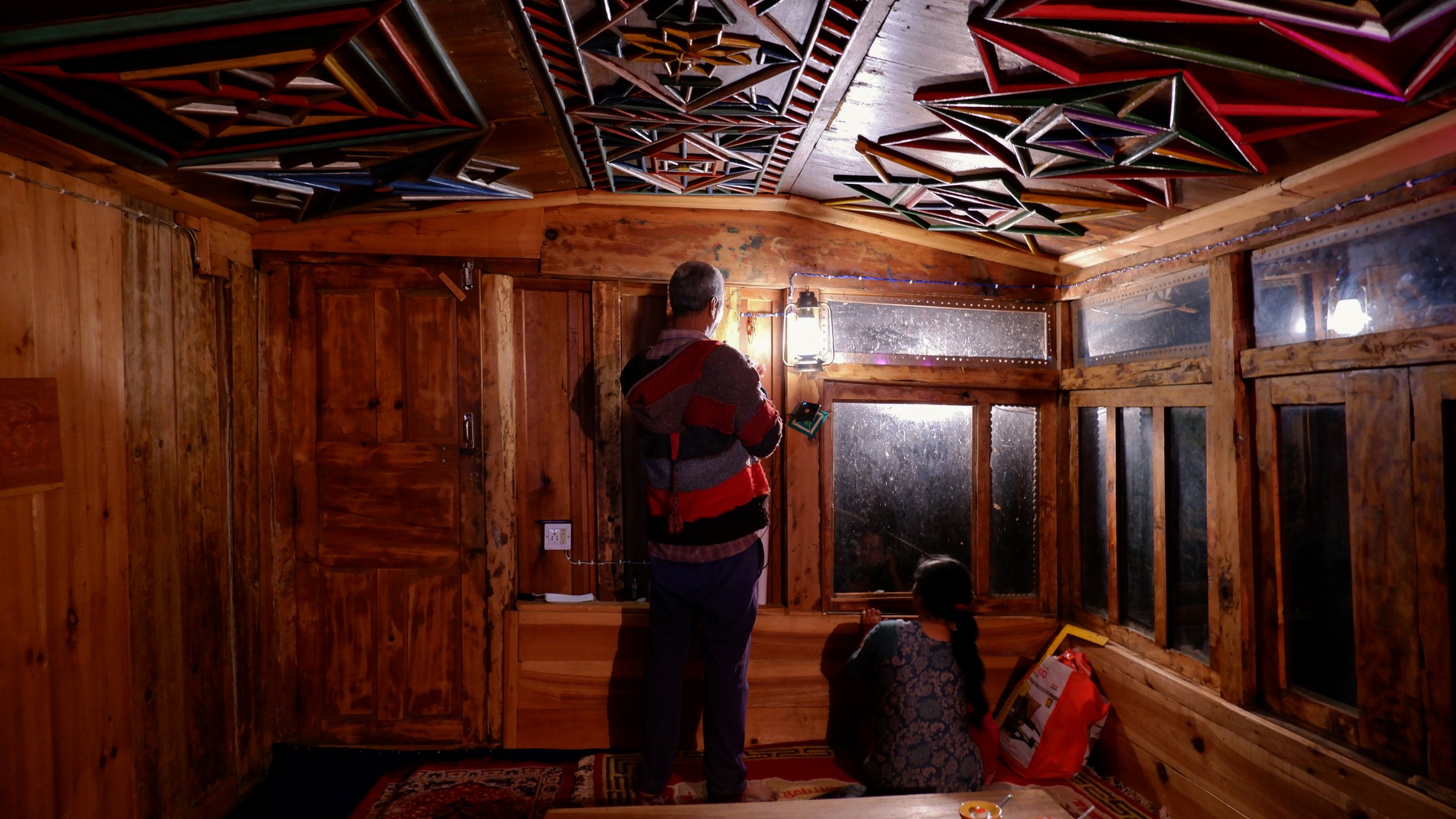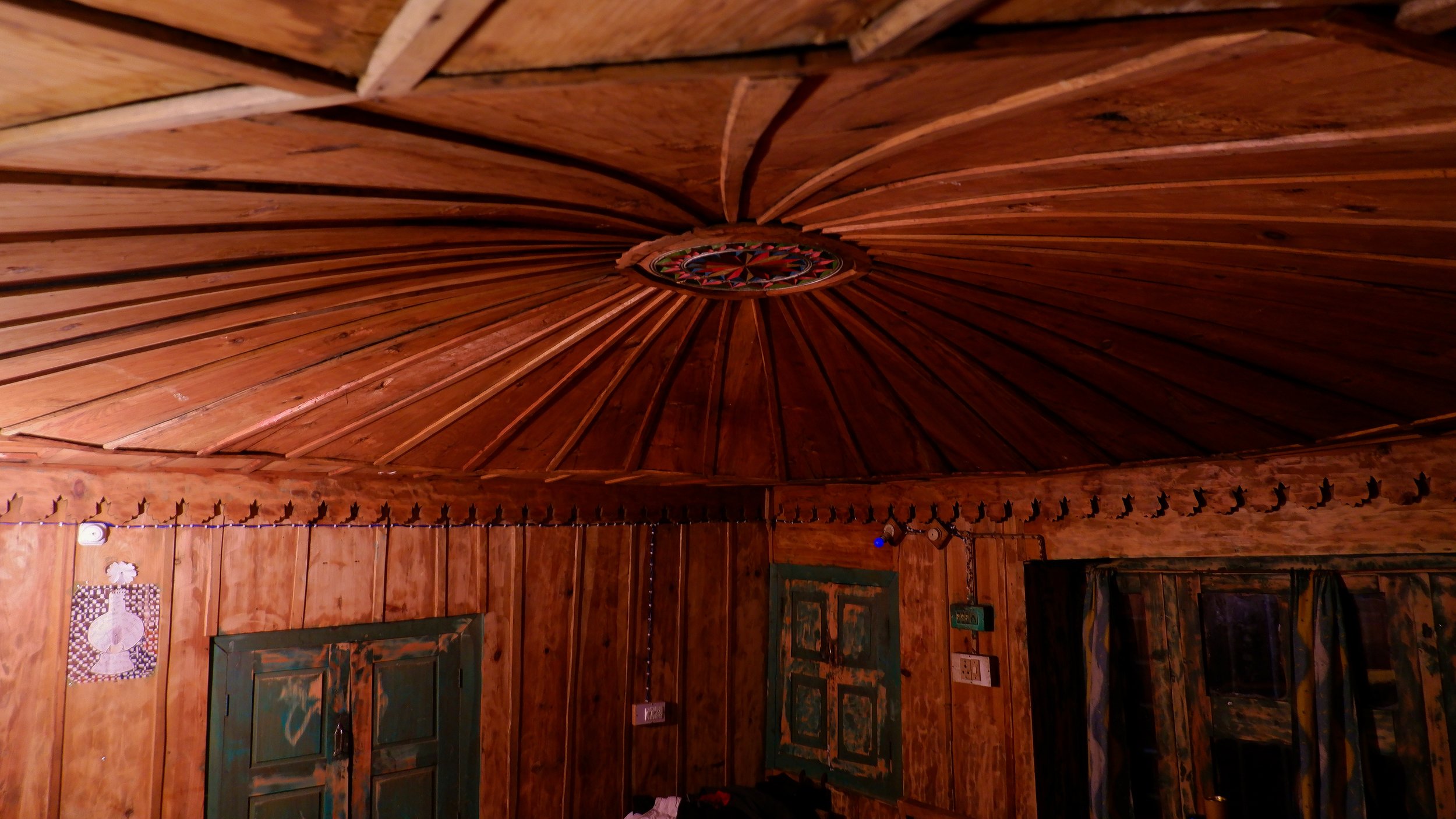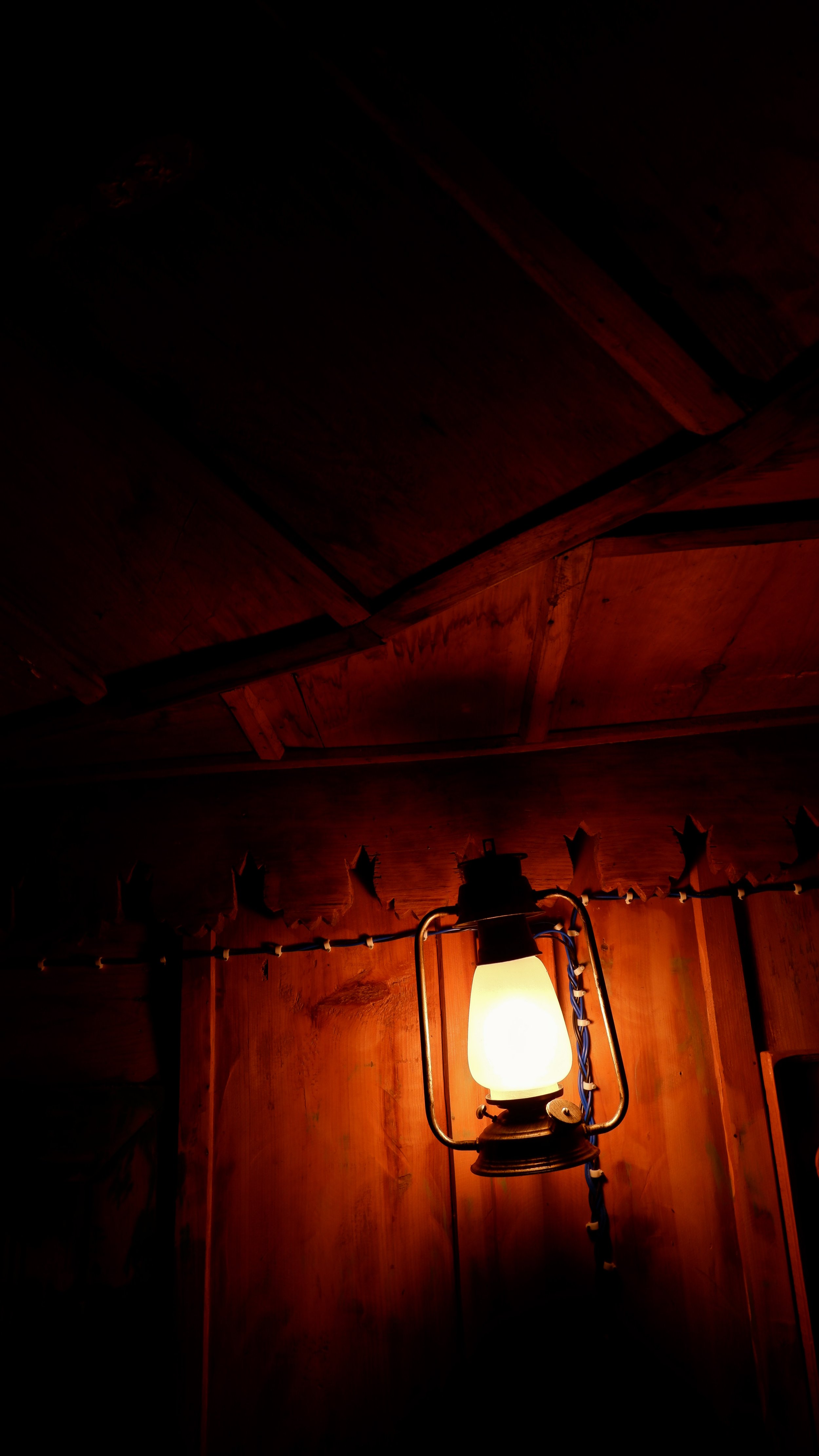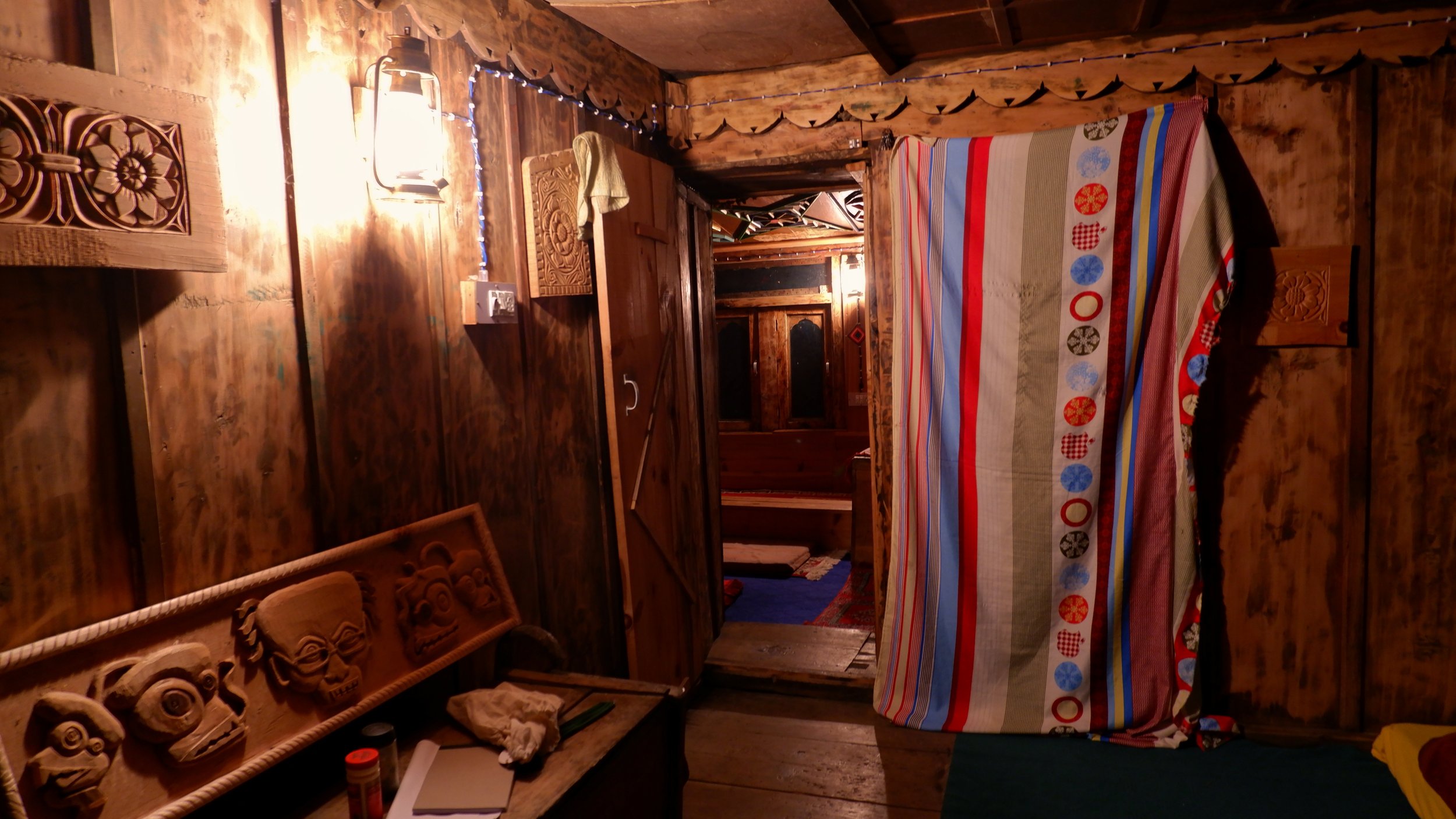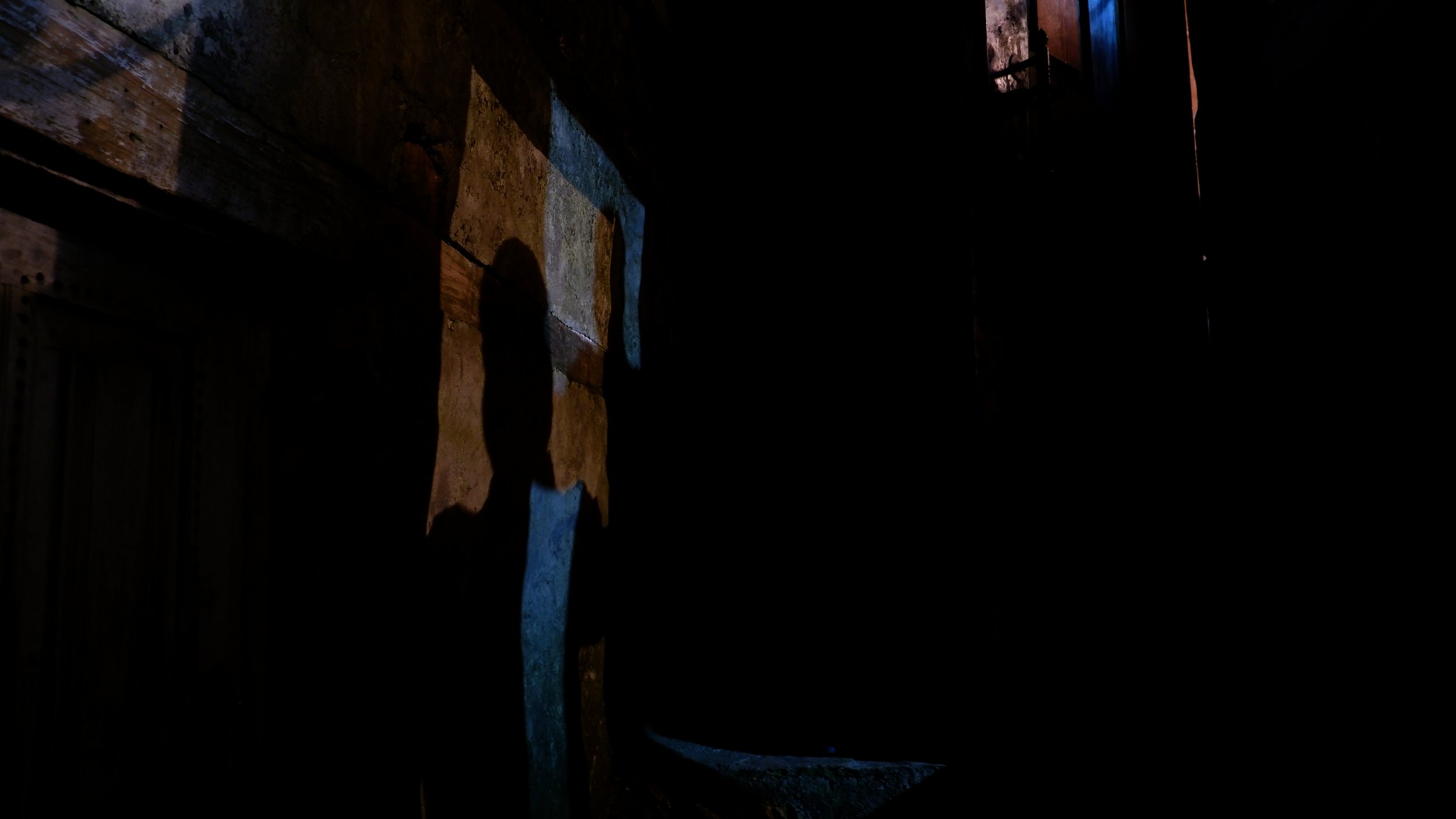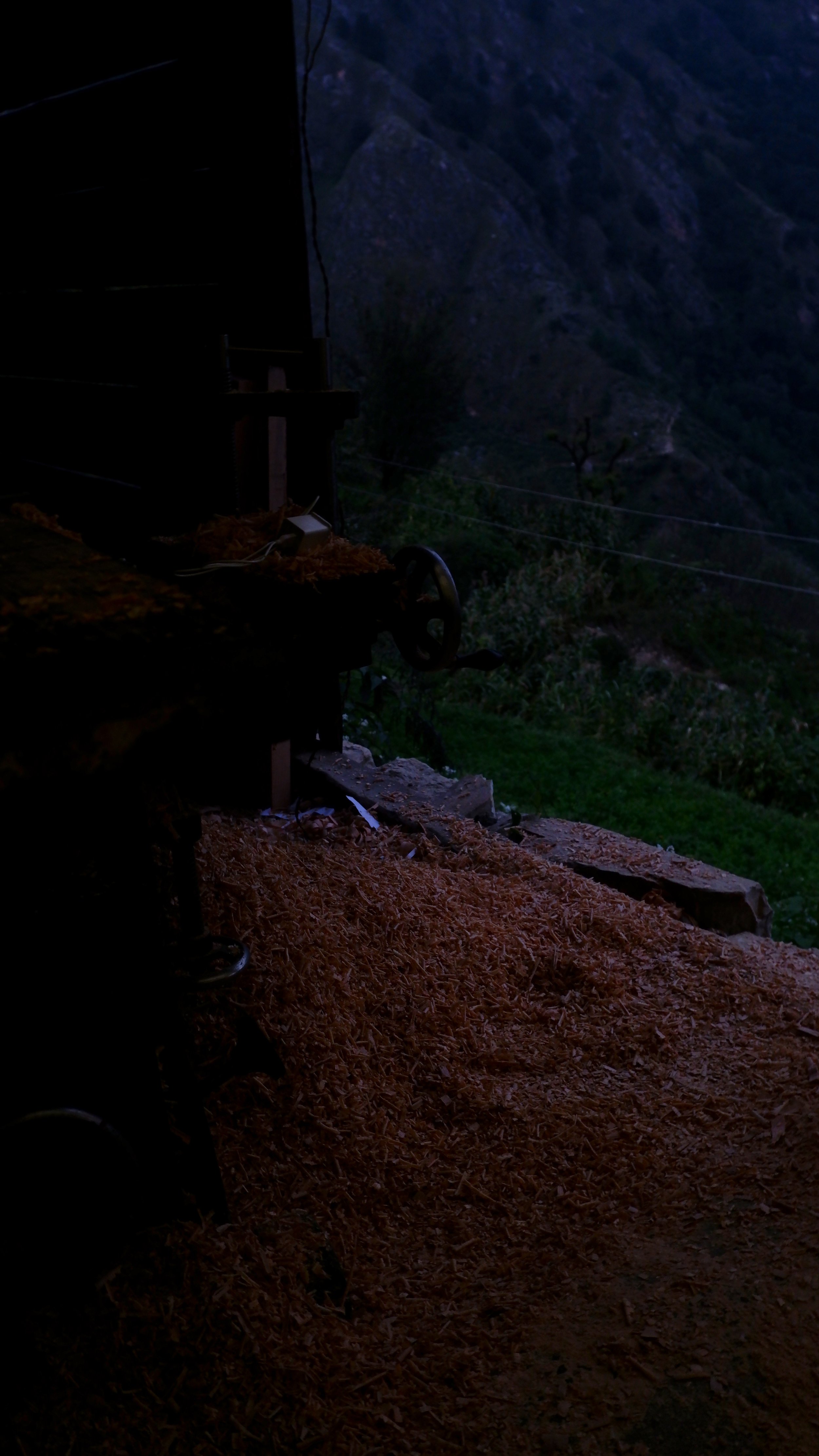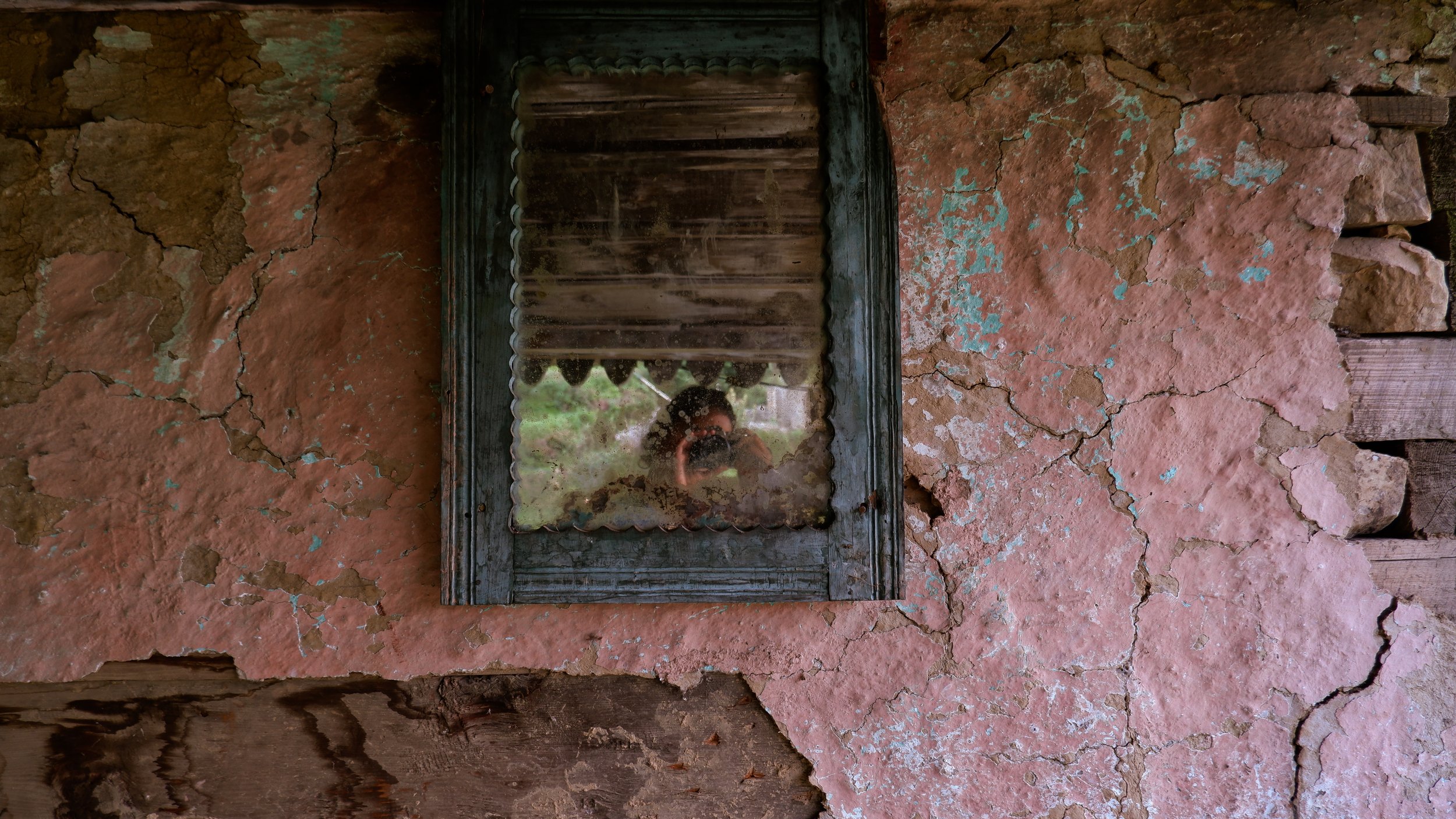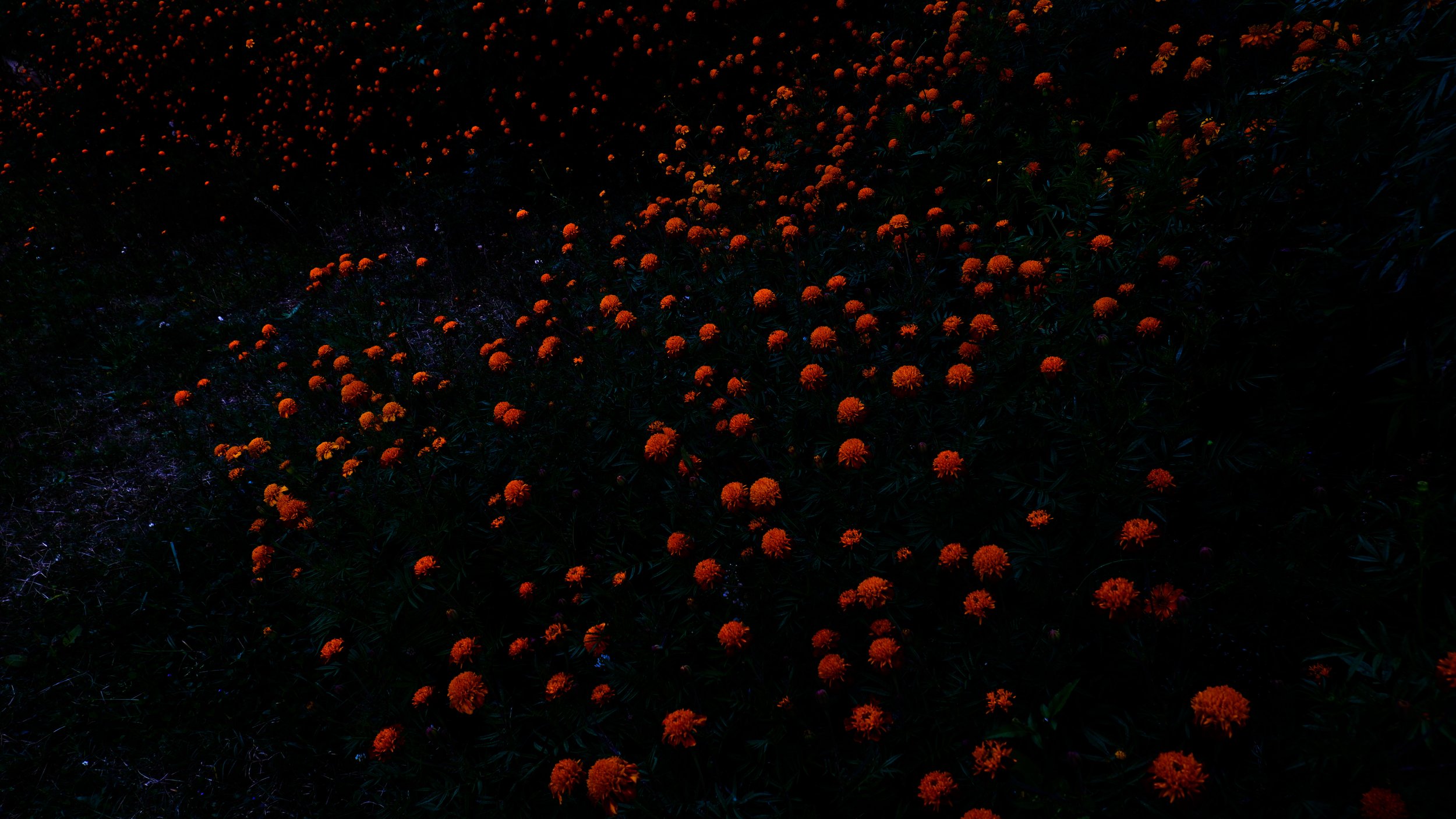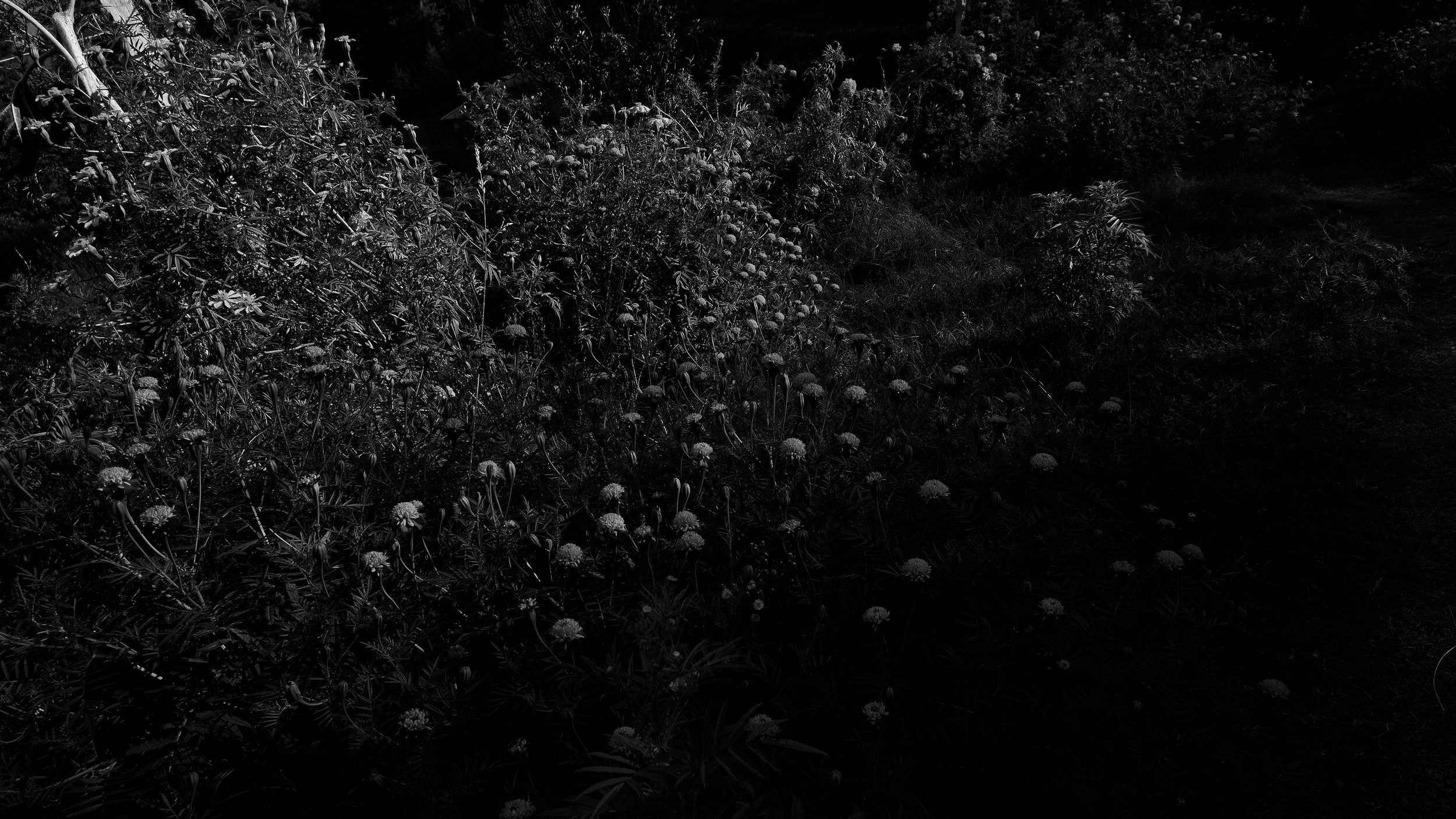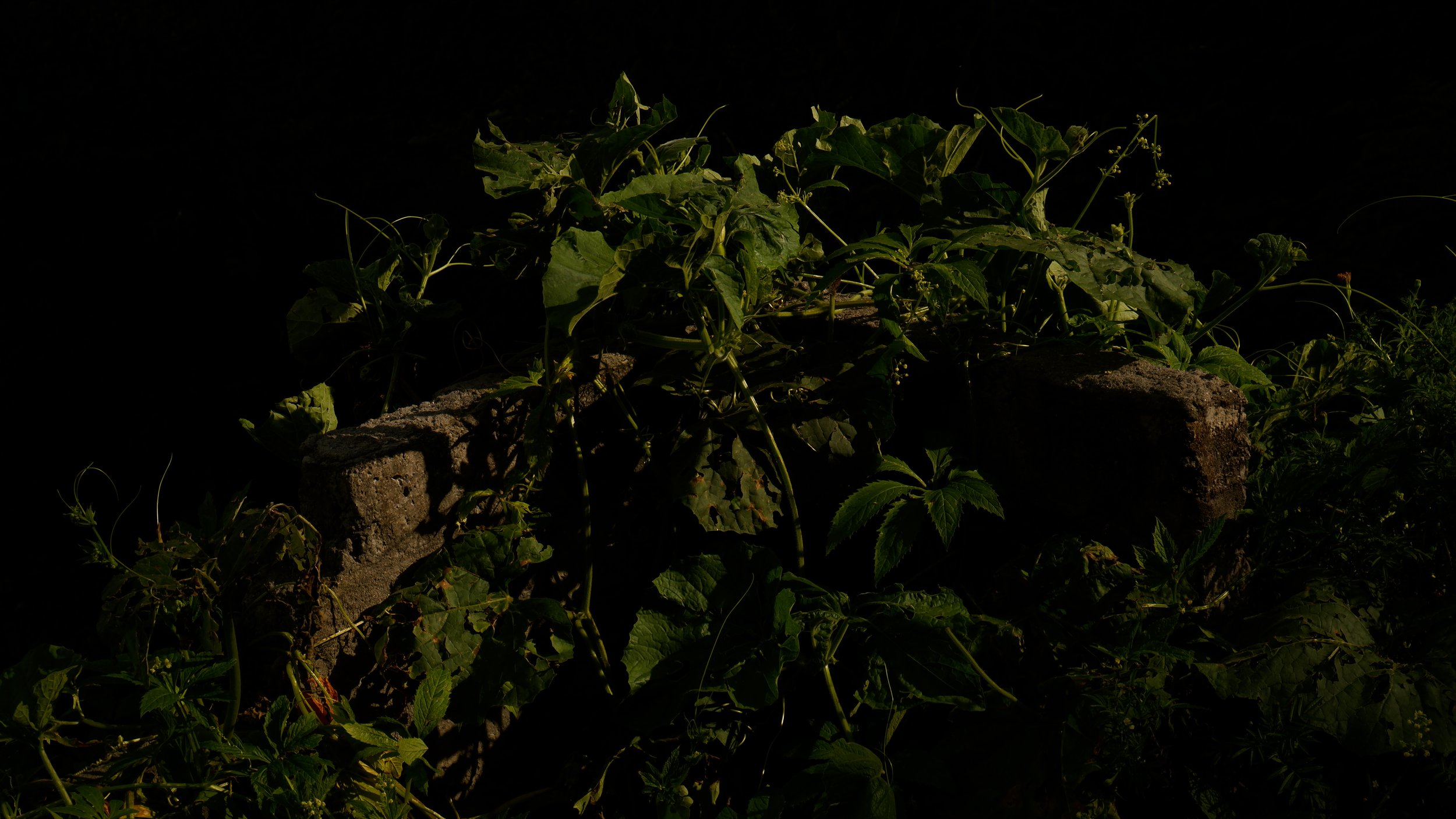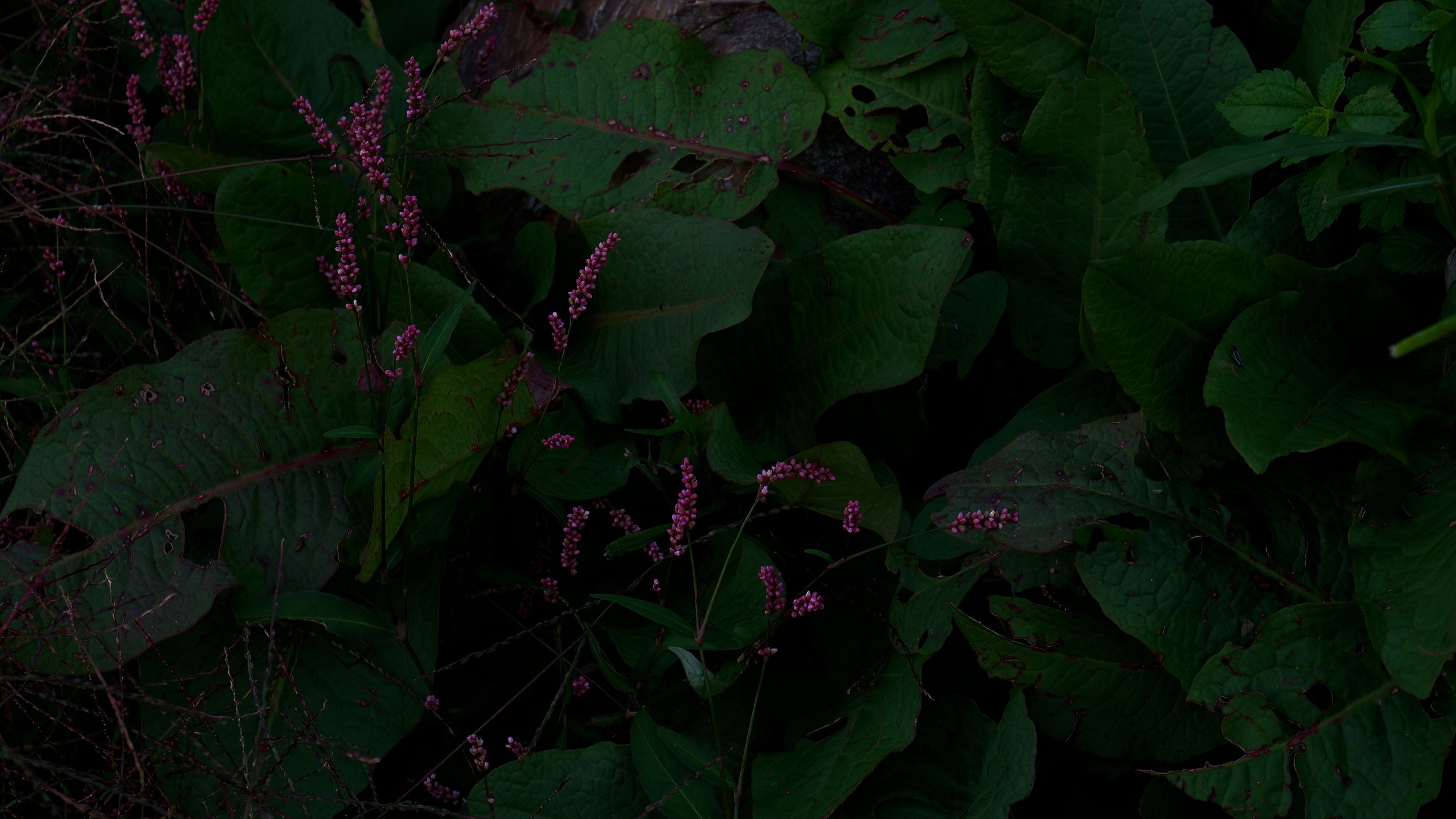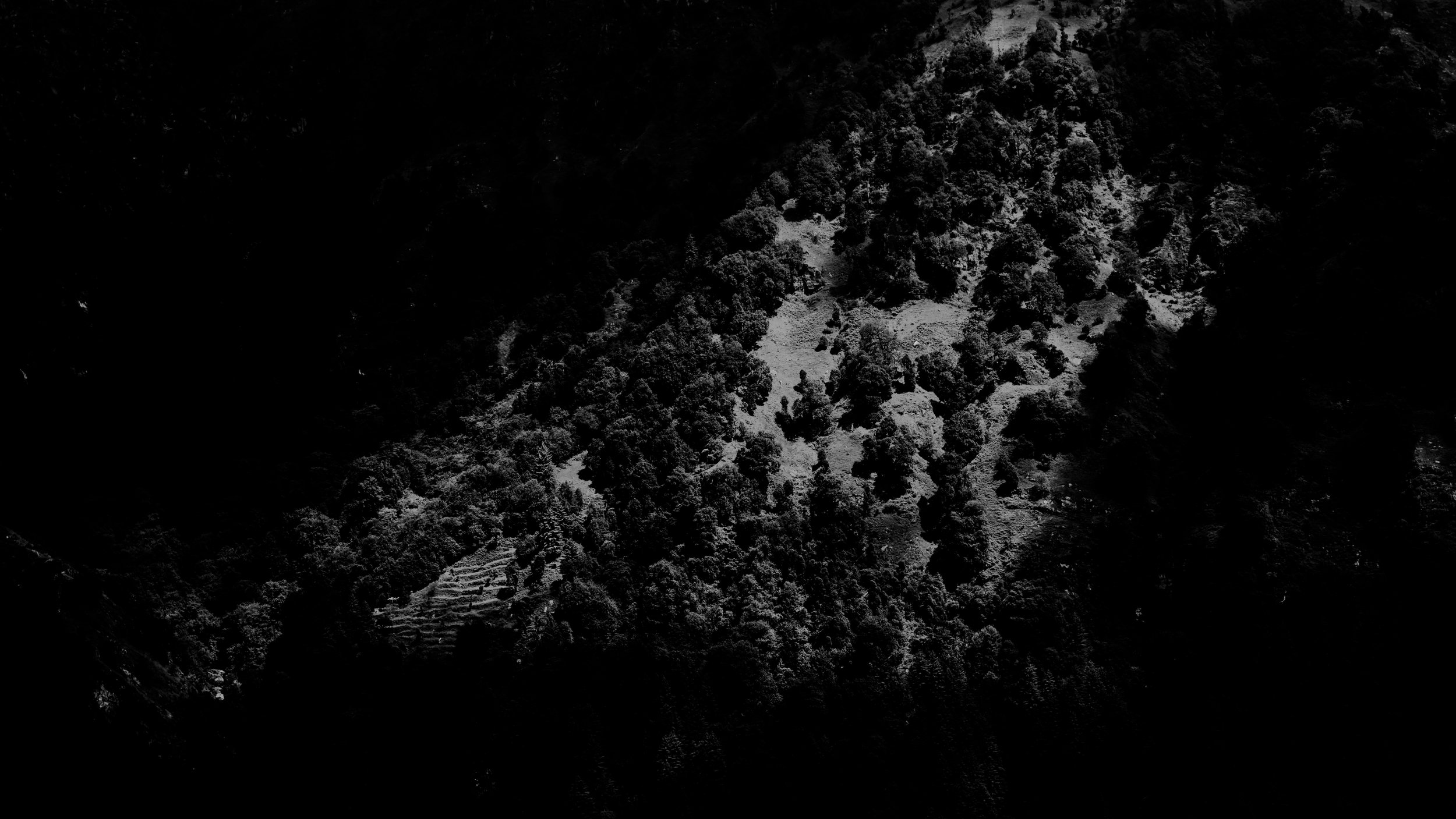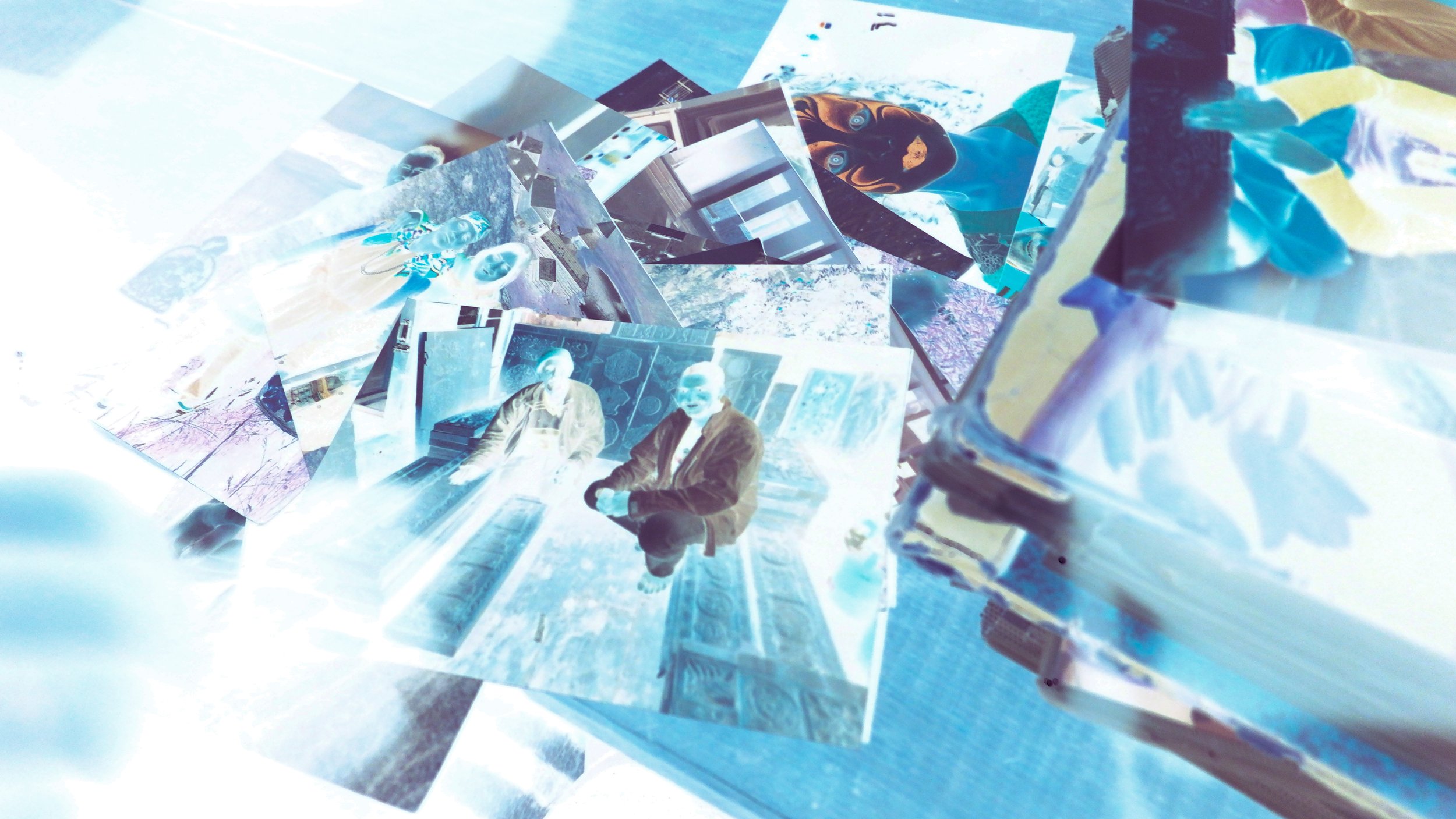An early Indian hippie who traveled the country, established the now well known ‘hippy spots’ on the trail and came back to his roots to promote eco-tourism and practice his generational craft of wood carving.
Some stories walk to us and let us discover them, not the other way around.
Three years ago, my eternal Nirvana through solo backpacking started with a trip to Gokarna, a coastal town in Karnataka. And here I was, standing at the Bhuntar bus stop on a relatively hot afternoon, dressed in a Himachali topi and woolen pants, carrying a full rucksack, a jhola heavier than that and a camera bag, looking around to spot Bickey bhaiji. The man who had witnessed the beginning of that very place. Whom I was to meet through a friend I knew via social media, another nomad hopelessly in love with the mountains and a mystic himself. As we met, stories connected us almost instantly. Tired of waiting for the next and the last bus for the day to Kamtan village, we headed to a dhaba nearby to indulge in some Tibetan food and tea. The conversations began and till the day I checked out of our ancient holy abode in Sainj valley, it remained like that. Conversations floating around travel tales and wisdom. This story for various reasons is very close to my heart and spirit, for it walked to me and let me discover it like no other story has before. And mainly, because it connected me back to my spiritual home of Gokarna, from the mountains. Another landscape that changed my life and perspective dramatically.
Leaving home at a very young age of thirteen to pursue his education, bhaiji volunteered for NGOs, implementing government schemes for women empowerment in villages and worked on school projects till seventeen.
At nineteen, he embarked on his adventurous journey of discovering India and everything that it had to offer through its food and tourism industry. Over anything, through its people and what connects us all, experiences. His first stop on this epic was Gokarna. Before the roots of his gokarna ‘finding and forming’ began which was to continue for 12 long years, he lived a while in Bangalore, again working with the non profit organizations.
Back then, Gokarna was not on the so-called Indian hippy circuit unlike it’s nearby cousin Goa. Anybody who has traveled here would compare it to the original Goa of the sixties as a vibe check. A comparatively calmer space, grounded in deep spiritual history and not overly crowded by tourists, although that is swiftly changing. The cafe which is well known across the tourist circuits there, the famous ‘Namaste’ which is found on every travel article on the web for the itinerary of this coastal paradise, was co-founded by Bhaiji with Givind Gowda, the current and ongoing owner of this legendary cafe. Back then, Gokarna was free of nomadic and traditional travelers and not a hut was to be found on those beaches now filled with many shacks, cafes and homestays. The original Namaste started as a small makeshift shack only serving tea and some snacks. While Mr. Govind focused on the building and construction of Namaste, Bhaiji took care of the counter and the kitchen. Along the ride, a certain company purchased that property and they had to develop the cafe in the remainiants of that land. Local boys from neighboring areas to Om beach were trained at Namaste and encouraged to run their own shacks. They were taught management skills and the workings of running a cafe so they could flourish in their independent businesses. There was never a sense of losing customers because of others growth or unhealthy business competitiveness. Quoting him; ‘sabko sath lekar chalna hi sabse badi cheez he. We didn't just run namaste, we helped them develop their properties and work.’
His strong belief in community building also reflected in the mentor figure he later played for about a hundred and fifty young wood carvers, training them in an art form which was passed on to him through generations, by his father. Some of those even stayed on for six years at a stretch to learn the craft from him, later turning into massive contractors of temple constructions in Himachal Pradesh.
At twenty eight, Bhaiji moved to Kasol and met Nimmi Ji. A year later, in ‘97, they got married and there on, believing in the vow of togetherness, have been working towards building a life of purpose and fulfillment through business and a balanced personal life. A new chapter of life did not stop them from traveling. Until 2000 they spent the summers in Himachal and went back south in the winters, mainly Gokarna being the base.
From ‘95-2004, Bhaiji networked and lived in Kasol. From setting up the very first German bakery, something that could be found at every corner of this place today, becoming one of the top most touristy ‘thing-to-do’ on a trip. A year after discovering kasol, he transferred the food team of namaste uphills and worked towards growing the chain.
Around 2001, Kasol as we know today, was initiated into its current ‘image’ formation. The traditional hippies or ‘shanti’ people or the classical Hare Rama Hare Krishna crowd was overpowered and the place turned into its chaotic drugged self. As he recalls it, the Izraeli circuits came in, various drugs were welcomed in with ‘full power’ and the atmosphere shifted drastically. Three hundred rounds of chillum in a circle in a go and parties lasting for days on end, tents filled with hippies became the norm. As Bhaiji and Nimmi Ji collectively believed, that was no environment to raise kids. For the growth of their family and desire to send their children to school away from a hippy hotspot, they turned back to their roots. Until 2008, that’s the Kasol which expanded out of proportion. Bhaiji’s close circle of friends wanted him to stay. Today many of them call him up to contemplate over this decision as they talk about how his children are doing far better and considerably well off while some of their kids got disoriented under the influence of heavy substance abuse and lost any real interest in pursuing their education whatsoever.
This is a major concern our media and social culture is comfortably bypassing. Ignorance to the real issues of these pahadi lives are costing many households a lot more than an outsider could comprehend. The accessibility of drugs to the pahadi youth, children exposed to these substances very early on because of the hyper normalized social image and the increase in tourist crowds making the situation worse, leading to disturbed family lives of many locals. Early marriages in addition leading to increased domestic abuse/violence and ‘extramarital affairs’ with tourists is another reality not talked enough about. Yes, the chillum is almost considered sacred in many valleys and a huge part of business in these regions is the grass cultivated on the land, but the repercussions are ignored in bright day light.
2005 onwards, they moved back to their generational house in Sainj valley. Nestled in a remote himalayan village, the Rabbit house is a century old traditional himachali house made of deodar. It was named so because of its unique structure from the inside, which feels like a rabbit’s residence underground. Rooms interconnected through doors placed like a maze, stairs leading up to hidden floors and underground construction from within to a place which is meant for either solitude or madness! It took me a while to comprehend this interestingly crafted home. Every single room has its own set of wood carvings gracefully designed and made by bhaiji and his coworkers. As seen in the images, Umeed and Akhlak are the two artists working on the carvings for over a year, hailing from Sarangpur. Soon, they plan on moving their families to RabbitHouse, to focus better on this artwork. Before which, largly just the pahadis were working alongside Bhaiji in this business.
As they continued crafting the wooden blocks of two different kinds and I began crafting images, the three of us began reminiscing home. By then, it had been a month since I hit the road to work on my book and shoot for a grant. They spoke of their lands and people and their individual journeys for the pursuit of this intricate craft. Artists far away in the valleys of the Himalaya, engrossed in doing what they do devotionally, remembering home after spending a long time in the pahadi solitude of doing and being. Talks of generational passing on of a practice, of learning and doing different jobs, of family and solitary discovery, of different temperatures and indifferent human behaviors, of passion and consistency, of travels and what keeps one going, of god and other beings. Although Bhaiji was pursuing his passion for the craft of wood carving part time whenever he got the time, he practiced it with determination 2006 onwards and a year later entered the space professionally. Between night and morning shifts, Nimmi Ji took care of the house and the kids while they worked on setting up the homestay together. Today, all the three children are pursuing good education in Shimla, the two daughters enrolled in medical science and accountancy respectively while their Son is following his path of travel and tourism, with a mild interest in wood carving.
Further, Bhaiji aims to educate people on basic tourism through workshops, train them for the industry and spread awareness on eco-tourism specifically.
Bickey bhaiji lived the nomadic dream long before it was an ideal lifestyle to reach for a generation. From Kanyakumari to Kolkata and Kerala, he had covered almost all of the coastal regions when the Konkan railways were just in it’s developing stages. His adventures across the country were majorly covered in buses, trains and hitchhiking. Bike rides around Goa with foreign tourists were occasional as he never stayed there for a prolonged period of time. He shared homes with the people that came across on these adventures and managed his travels alongside working mainly in the food and tourism industry.
For a month or two he would work 18 hour long shifts, starting at six in the morning some nights going up till two or three. To take a break and refresh his soul, he would then take off to unknown destinations for a week’s reset, sometimes even two, solo on his way! Way before the glorious ever expanding digital nomad concepts, before the instagram famous travel couples were trendy or paid collaborations were mainstream to sustain an online stream of work enabling one to live such a life, Bhaiji and Nimmi Ji carved their lives on their own terms, however they could with balance and grace, filled with stories and soul enriching adventures.
A believer of connecting people, empowering through coaching and taking everyone along the ride, he certainly lived the life which is consciously envisioned and executed with grace, as Nimmi ji accompanied him throughout with strength, love and divine trust!


